
app-platform
AppPlatform 是一个前沿的大模型应用工程,旨在通过集成的声明式编程和低代码配置工具,简化和优化大模型的训练与推理应用的开发过程。本工程为软件工程师和产品经理提供一个强大的、可扩展的环境,以支持从概念到部署的全流程 AI 应用开发。
Stars: 1282
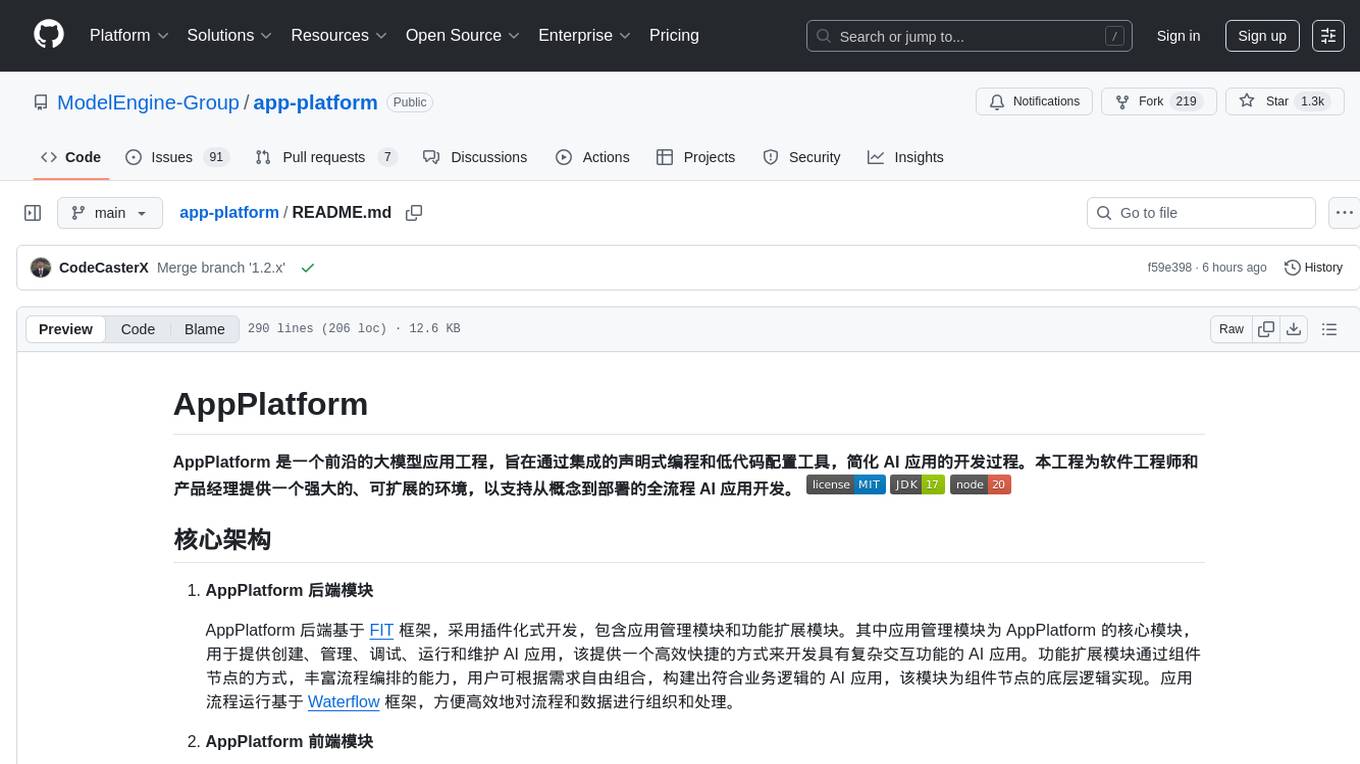
AppPlatform is an advanced large-scale model application engineering aimed at simplifying the development process of AI applications through integrated declarative programming and low-code configuration tools. This project provides a powerful and scalable environment for software engineers and product managers to support the full-cycle development of AI applications from concept to deployment. The backend module is based on the FIT framework, utilizing a plugin-based development approach, including application management and feature extension modules. The frontend module is developed using React framework, focusing on core modules such as application development, application marketplace, intelligent forms, and plugin management. Key features include low-code graphical interface, powerful operators and scheduling platform, and sharing and collaboration capabilities. The project also provides detailed instructions for setting up and running both backend and frontend environments for development and testing.
README:
AppPlatform 是一个前沿的大模型应用工程,旨在通过集成的声明式编程和低代码配置工具,简化 AI 应用的开发过程。本工程为软件工程师和产品经理提供一个强大的、可扩展的环境,以支持从概念到部署的全流程 AI 应用开发。


-
AppPlatform 后端模块
AppPlatform 后端基于 FIT 框架,采用插件化式开发,包含应用管理模块和功能扩展模块。其中应用管理模块为 AppPlatform 的核心模块,用于提供创建、管理、调试、运行和维护 AI 应用,该提供一个高效快捷的方式来开发具有复杂交互功能的 AI 应用。功能扩展模块通过组件节点的方式,丰富流程编排的能力,用户可根据需求自由组合,构建出符合业务逻辑的 AI 应用,该模块为组件节点的底层逻辑实现。应用流程运行基于 Waterflow 框架,方便高效地对流程和数据进行组织和处理。
-
AppPlatform 前端模块
AppPlatform 前端采用 React 框架进行开发,基于函数式组件构建,通过模块化设计实现了应用开发,应用市场,智能表单和插件管理等核心功能模块。其中应用开发模块为核心模块,提供可视化界面支持AI应用的完整生命周期管理,包含了应用创建,编排,调试,运行,和发布全流程;智能表单模块可通过 Json Schema 自动渲染可交互表单,与 AI 模型服务集成,实现表单填写与实时推理;插件模块支持开发者上传自定义插件扩展应用工程能力,并提供了插件安装和卸载等功能。此外,前端流程编排还基于 Elsa 图形引擎,Elsa 图形引擎是一款基于原生 JS 打造而成的先进图形处理工具。通过统一的数据格式,可以让图形跨平台跨应用进行展示和协作,为用户提供灵活、高性能的图形渲染与交互能力,适用于复杂可视化场景的开发需求。
- 低代码图形化界面:产品人员可以通过直观的图形界面创建 AI 应用,而无需深入了解底层代码即可进行高效的编辑和调试。同时支持多模型协同运作,使用户能够根据特定的业务需求,将不同的 AI 模型通过编排整合到同一个应用流程中。
- 强大的算子与调度平台:通过 FIT 与 Waterflow 框架,AppPlatform 提供了一个高效、可扩展的后端架构,支持 Java、Python 等多种主流编程语言的算子开发,并通过智能调度实现优化的执行效率。
- 共享与协作: AppPlatform 的底层包含 Store 模版,用于将所有开发的 AI 应用统一存储,以此支持跨项目的复用和协作。开发者可以根据需要组合这些应用,打造更大的解决方案,或者利用社区提供的工具和模型。在 AppPlatform 中, AI 应用不仅限于传统意义上的 “应用”,它们可以是 “函数”、“RAG”、“智能体”等任何可解释和可执行的组件。这些组件在 Store 中以 “工具” 的形式展现,其元数据不仅提供了必要的解释,还为智能体自动调度这些工具提供了基础。
| 名称 | 规格 |
|---|---|
| CPU | 2+ 核心 |
| CPU 架构 | x86 |
| 内存 | 4+ GB |
| 软件 | 安装 Docker & Docker Compose |
克隆项目并进入项目根目录,执行以下命令:/ Clone the repository and enter the project root directory, then run the following commands:
# 用户按需配置环境变量,例如模型名称、基础 URL 和 APIKEY等 / Configure environment variables as needed, including model name, base URL and APIKEY
cp docker/.env.example docker/.env
bash docker/deploy.sh容器全部 Running 后,浏览器打开 http://localhost:8001 体验
如需修改数据库密码,二次启动前需要删除
docker/app-platform-tmp目录
本章节给出快速启动之后,本地快速开发测试的方法。
编写代码,在项目根目录下,执行以下命令编译:
mvn clean install在项目根目录下,执行以下命令快速部署:
bash docker/dev-app-builder.sh浏览器打开 http://localhost:8001 测试
- 下载并安装 PostgresSQL (支持版本 ≥ 14)
- 初始化数据。进入
shell目录,使用bash工具执行build_win.sh(当前不支持cmd执行,待规划):
cd shell
sh build_win.sh ${ip} ${port} ${username} ${password}
其中参数 ip、port、username、password 分别指的是数据库主机地址、数据库端口、数据用户名、数据库密码。该文件会初始化数据库内置数据,以及人工表单功能所需的数据。
待规划
开发环境配置
- 开发环境:
IntelliJ IDEA - Java 17
- 代码格式化文件:CodeFormatterFromIdea.xml
-
Maven配置:推荐版本 Maven 3.8.8+ - FIT 框架编译产物:参考 FIT 框架 的
环境配置构建编译产物
构建命令
mvn clean install
输出目录
build/
目录调整
需要将输出目录与 FIT 框架的编译产物结合。将输出目录的 plugins 目录下的所有文件复制到框架输出目录的 plugins 下,将 shared 目录下的所有文件复制到框架输出目录的 shared 下。
另外,需要删除 plugins 目录中如下开头的文件(app-platform 仓扩展了这些机制,已经存在对应的实现。否则会由于存在冲突导致启动失败)
fel-tool-discoverer
fel-tool-executor
fel-tool-repository-simple
fel-tool-factory-repository
打开框架输出目录的 conf/fitframework.yml 文件,找到如下配置项
fit:
beans:
packages:
- 'modelengine.fitframework'
- 'modelengine.fit'配置本地智能表单路径,首先创建目录.\app-builder\smart_form 此目录可根据实际情况修改,然后copy项目中的
example\app-demo\normal-form及smart-form中的所有内容到上述目录,打包template目录内容template.zip
并复制到smart-form 结果如下所示:
app-builder/
├── smart_form/
│ ├── 6befc536-7e6d-48b5-8dcb-1c4d04ca4e92
│ ├── 17b732c9-5272-42a6-a79d-8d0334a8aa19
│ ├── 7958d851-8062-49bd-b21e-d7372991c905
│ ├── b6255699-2e4f-409f-a578-b87b7435e389
│ ├── e85bd769-0212-4305-b56b-01e77faa14ff
│ ├── temporary
│ └── template.zip加入数据库配置项,修改后的配置项如下所示:
fit:
beans:
packages:
- 'modelengine.fitframework'
- 'modelengine.fit'
datasource:
primary: 'sample-datasource' # 表示所选用的示例数据源。
instances:
sample-datasource:
mode: 'shared' # 表示该数据源的模式,可选共享(shared)或独占(exclusive)模式。
url: 'jdbc:postgresql://${ip}:${port}/' # 将 ip 换成数据库服务器的 ip 地址,将 port 换成数据库服务器监听的端口。
username: '${username}' # 将 username 替换为数据库的名称。
password: '${password}' # 将 password 替换为数据库的密码。
druid:
initialSize: ${initialSize} # 将 initialSize 替换为连接池的初始化连接数。
minIdle: ${midIdle} # 将 minIdle 替换为连接池的最小空闲连接数。
maxActive: ${maxActive} # 将 maxActive 替换为数据库连接池的最大活动连接数。
# 可根据具体需求,添加连接池所需配置项。
app-engine:
resource:
path: ${localFormPath} # 配置本地的智能表单根路径,win下如 D:\\app-builder\\
form:
path-prefix: ${localFormPath} # 配置本地的智能表单根路径,win下如 D:\\app-builder\\
启动命令
在框架输出目录的 bin 目录下执行启动命令
fit start
这里直接使用了
fit命令,该命令请参考fit-framework项目的指导手册。当前,
app-platform使用了fit的 3.5.1 版本,因此,如果采用手动编译,需要在fit-framework仓库中切换到v3.5.1标签处进行编译构建操作。
调试命令
fit debug
这里的调试命令背后使用了 Java 内置的远程调试命令,通过该技术,可以在进程启动之后,在
IDEA中绑定启动端口进行远程调试。
-
开发环境:
WebStorm、Visual Studio Code -
环境要求:node.js >= 20
-
ELSA 框架编译产物:参考 ELSA 的编译构建章节
修改 ELSA 依赖地址
进入目录 app-platform/frontend ,搜索 package.json 文件的 ELSA 依赖地址:
"dependencies": {
"@fit-elsa/elsa-core": "file:${fitElsaCoreUrl}",
"@fit-elsa/elsa-react": "file:${fitElsaReactUrl}",
将 ${fitElsaCoreUrl} 和 ${fitElsaReactUrl} 分别改成 ELSA 框架编译产物 fit-elsa-core 和 fit-react 的目录地址即可。
修改代理文件
修改 app-platform/frontend 目录下的 proxy.config.json 文件,可以修改需要访问的后端地址。如本地后端地址是 http://127.0.0.1:8080 。可以按照如下示例配置:
{
"/api": {
"target": "http://127.0.0.1:8080",
"secure": false,
"changeOrigin": true,
"pathRewrite": {
"^/api": ""
}
}
}依赖安装
cd app-platform/frontend/
npm install
打包构建
在 package.json 中定义了多种打包脚本,这里以 build:single 为例:
npm run build:single
启动命令
npm run start
模型配置
在对话中使用大模型功能,需要对模型进行配置,包括大模型的地址和鉴权信息。
首先在首页的应用市场一栏中找到 模型配置应用,并点击该应用。点击右上角创意灵感 的开始配置,如下图所示:
 然后点击回答的
然后点击回答的 添加模型 按钮,输入模型名称、API Key 和模型地址,并点击确认。此时模型添加成功。
应用创建
在首页的应用开发一栏中点击创建空白应用。如下所示:
 输入所要创建的应用名称和简介,并点击
输入所要创建的应用名称和简介,并点击 创建按钮,即可创建 AI 应用。接着在跳转后的应用配置页面上,在 大模型 一栏中选择自定义配置的模型。此时即可在对话框进行对话。如下所示:

您可以从docs目录查看项目的完整文档,文档包含 AppPlatform 的快速入门指南和用户指导手册。
待完善
欢迎贡献者加入本项目。 请阅读 CONTRIBUTING.md,这将指导您完成分支管理、标签管理、提交规则、代码审查等内容。遵循这些指导有助于项目的高效开发和良好协作。
- 如果发现问题,可以在该项目的
Issue模块内提出。
For Tasks:
Click tags to check more tools for each tasksFor Jobs:
Alternative AI tools for app-platform
Similar Open Source Tools

app-platform
AppPlatform is an advanced large-scale model application engineering aimed at simplifying the development process of AI applications through integrated declarative programming and low-code configuration tools. This project provides a powerful and scalable environment for software engineers and product managers to support the full-cycle development of AI applications from concept to deployment. The backend module is based on the FIT framework, utilizing a plugin-based development approach, including application management and feature extension modules. The frontend module is developed using React framework, focusing on core modules such as application development, application marketplace, intelligent forms, and plugin management. Key features include low-code graphical interface, powerful operators and scheduling platform, and sharing and collaboration capabilities. The project also provides detailed instructions for setting up and running both backend and frontend environments for development and testing.
wealth-tracker
Wealth Tracker is a personal finance management tool designed to help users track their income, expenses, and investments in one place. With intuitive features and customizable categories, users can easily monitor their financial health and make informed decisions. The tool provides detailed reports and visualizations to analyze spending patterns and set financial goals. Whether you are budgeting, saving for a big purchase, or planning for retirement, Wealth Tracker offers a comprehensive solution to manage your money effectively.
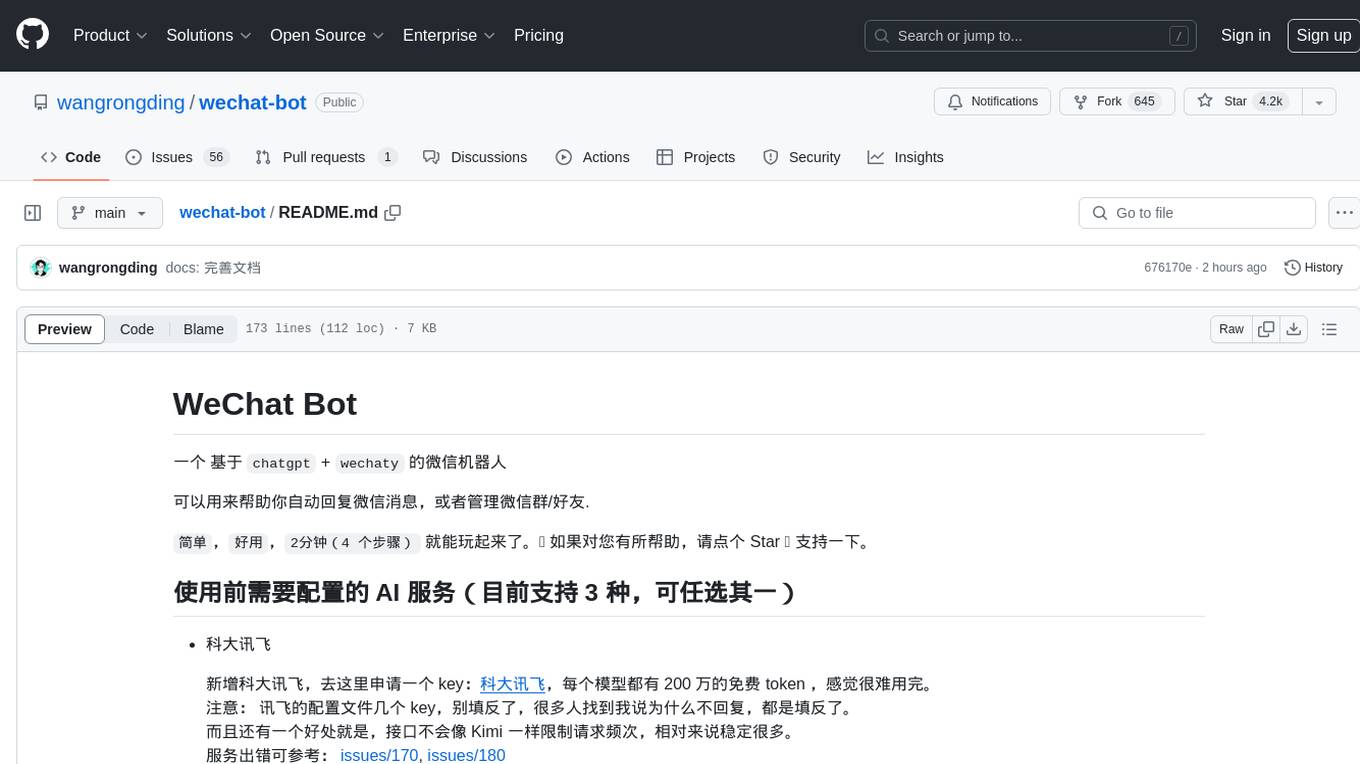
wechat-bot
WeChat Bot is a simple and easy-to-use WeChat robot based on chatgpt and wechaty. It can help you automatically reply to WeChat messages or manage WeChat groups/friends. The tool requires configuration of AI services such as Xunfei, Kimi, or ChatGPT. Users can customize the tool to automatically reply to group or private chat messages based on predefined conditions. The tool supports running in Docker for easy deployment and provides a convenient way to interact with various AI services for WeChat automation.
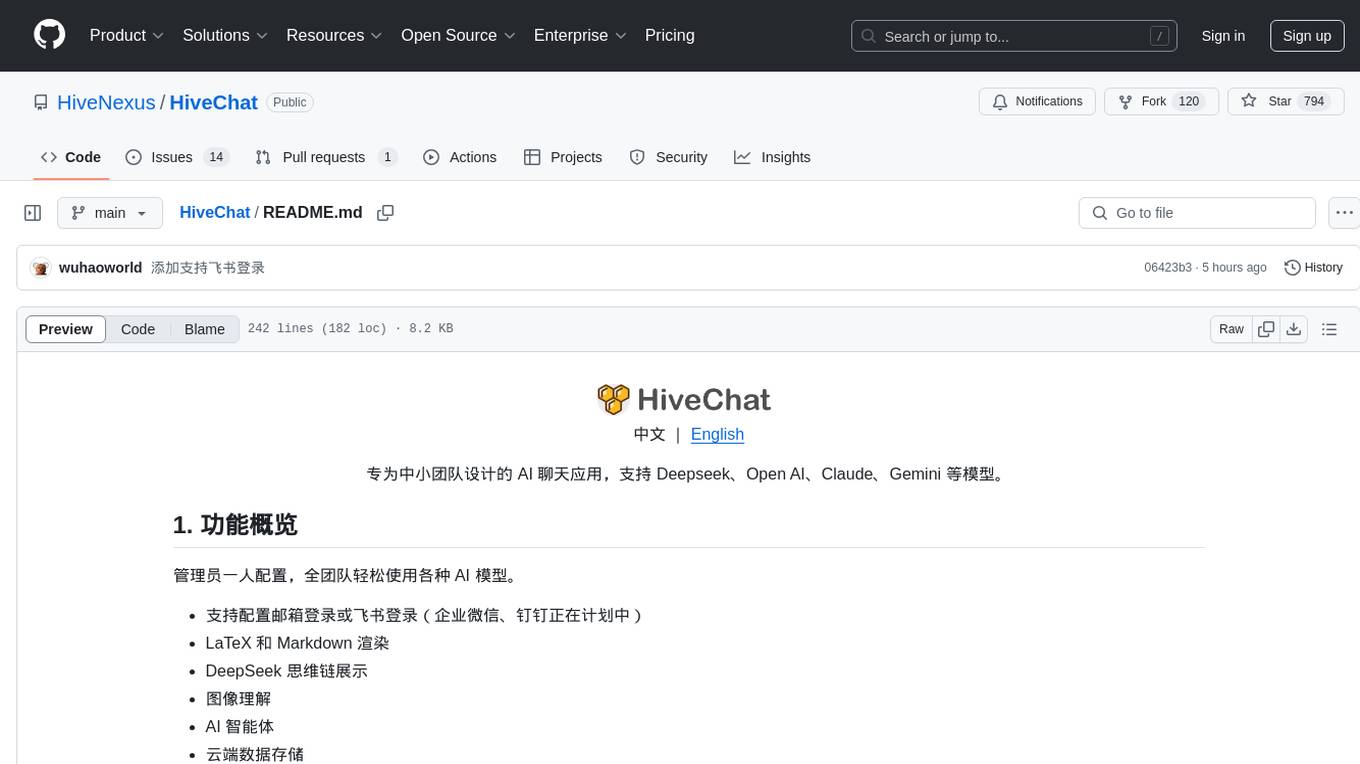
HiveChat
HiveChat is an AI chat application designed for small and medium teams. It supports various models such as DeepSeek, Open AI, Claude, and Gemini. The tool allows easy configuration by one administrator for the entire team to use different AI models. It supports features like email or Feishu login, LaTeX and Markdown rendering, DeepSeek mind map display, image understanding, AI agents, cloud data storage, and integration with multiple large model service providers. Users can engage in conversations by logging in, while administrators can configure AI service providers, manage users, and control account registration. The technology stack includes Next.js, Tailwindcss, Auth.js, PostgreSQL, Drizzle ORM, and Ant Design.
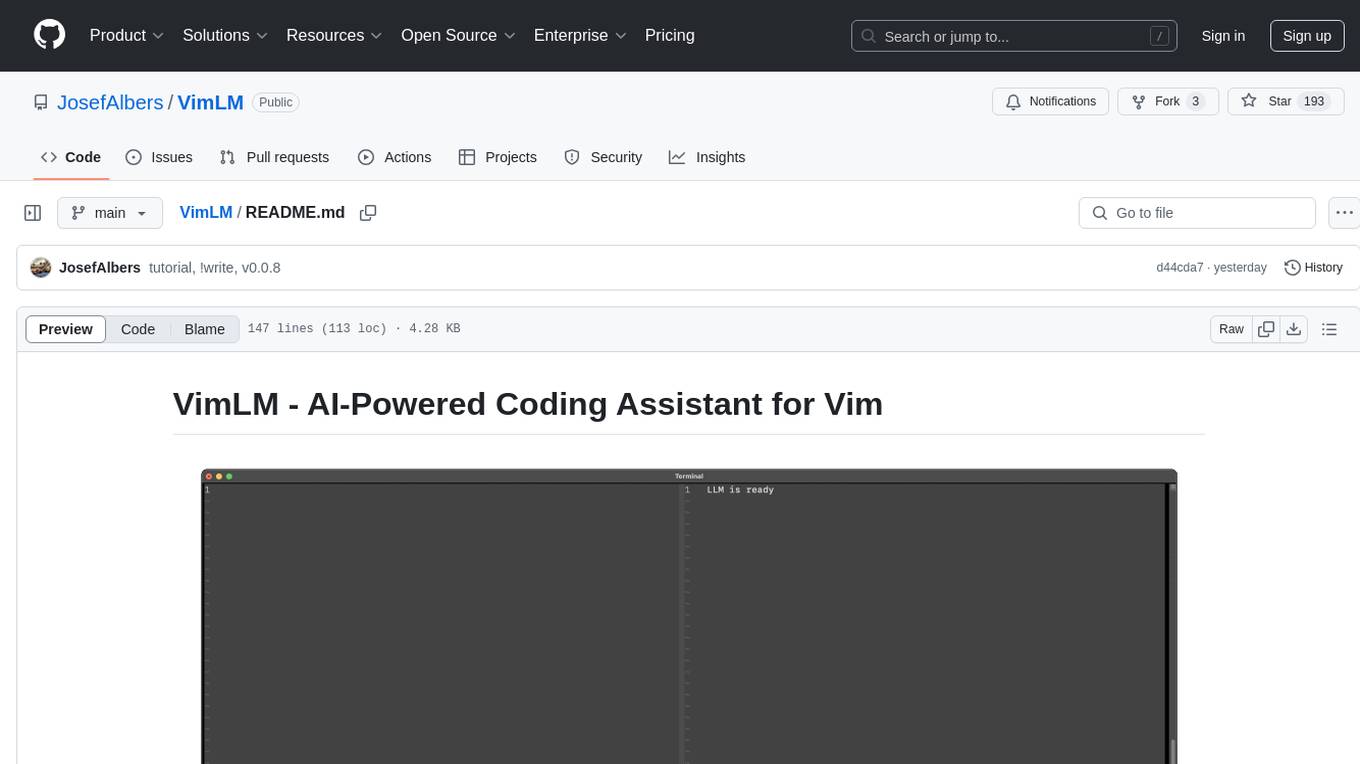
VimLM
VimLM is an AI-powered coding assistant for Vim that integrates AI for code generation, refactoring, and documentation directly into your Vim workflow. It offers native Vim integration with split-window responses and intuitive keybindings, offline first execution with MLX-compatible models, contextual awareness with seamless integration with codebase and external resources, conversational workflow for iterating on responses, project scaffolding for generating and deploying code blocks, and extensibility for creating custom LLM workflows with command chains.
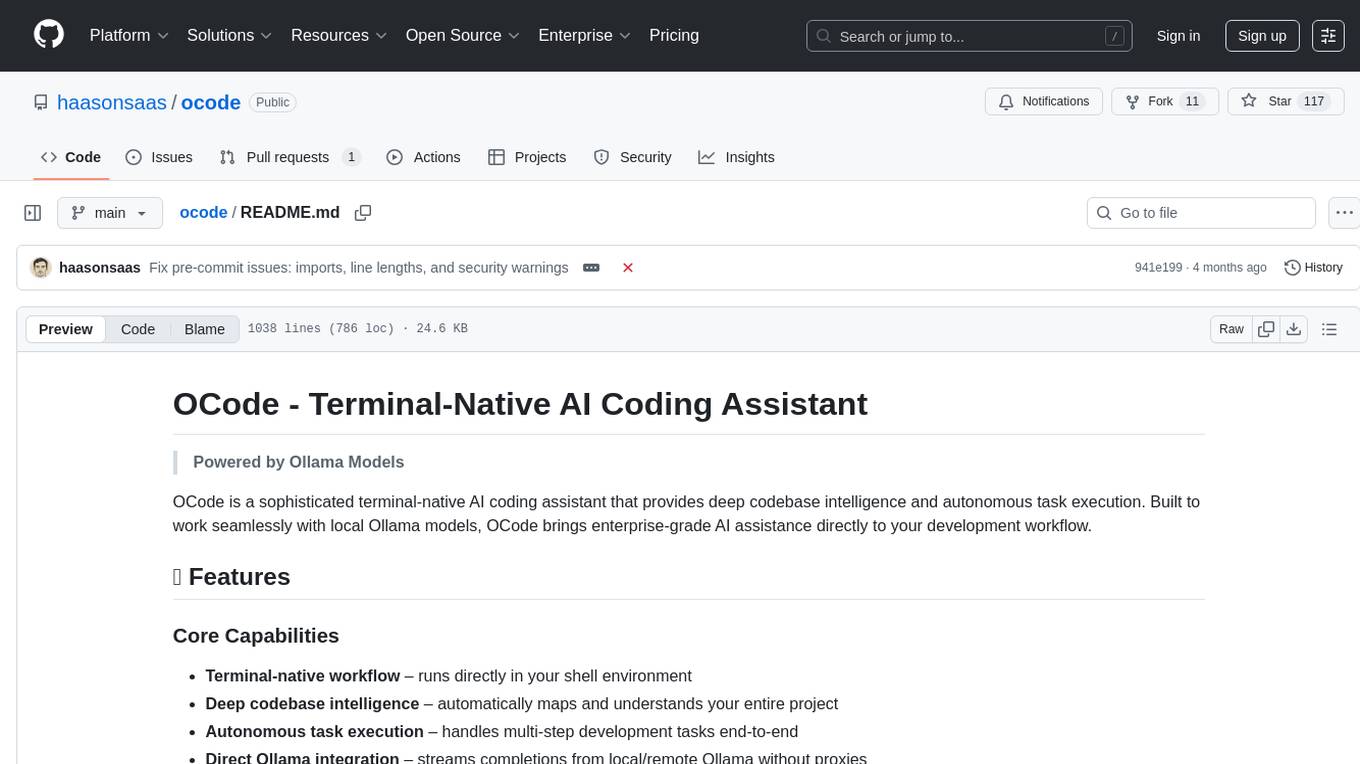
ocode
OCode is a sophisticated terminal-native AI coding assistant that provides deep codebase intelligence and autonomous task execution. It seamlessly works with local Ollama models, bringing enterprise-grade AI assistance directly to your development workflow. OCode offers core capabilities such as terminal-native workflow, deep codebase intelligence, autonomous task execution, direct Ollama integration, and an extensible plugin layer. It can perform tasks like code generation & modification, project understanding, development automation, data processing, system operations, and interactive operations. The tool includes specialized tools for file operations, text processing, data processing, system operations, development tools, and integration. OCode enhances conversation parsing, offers smart tool selection, and provides performance improvements for coding tasks.
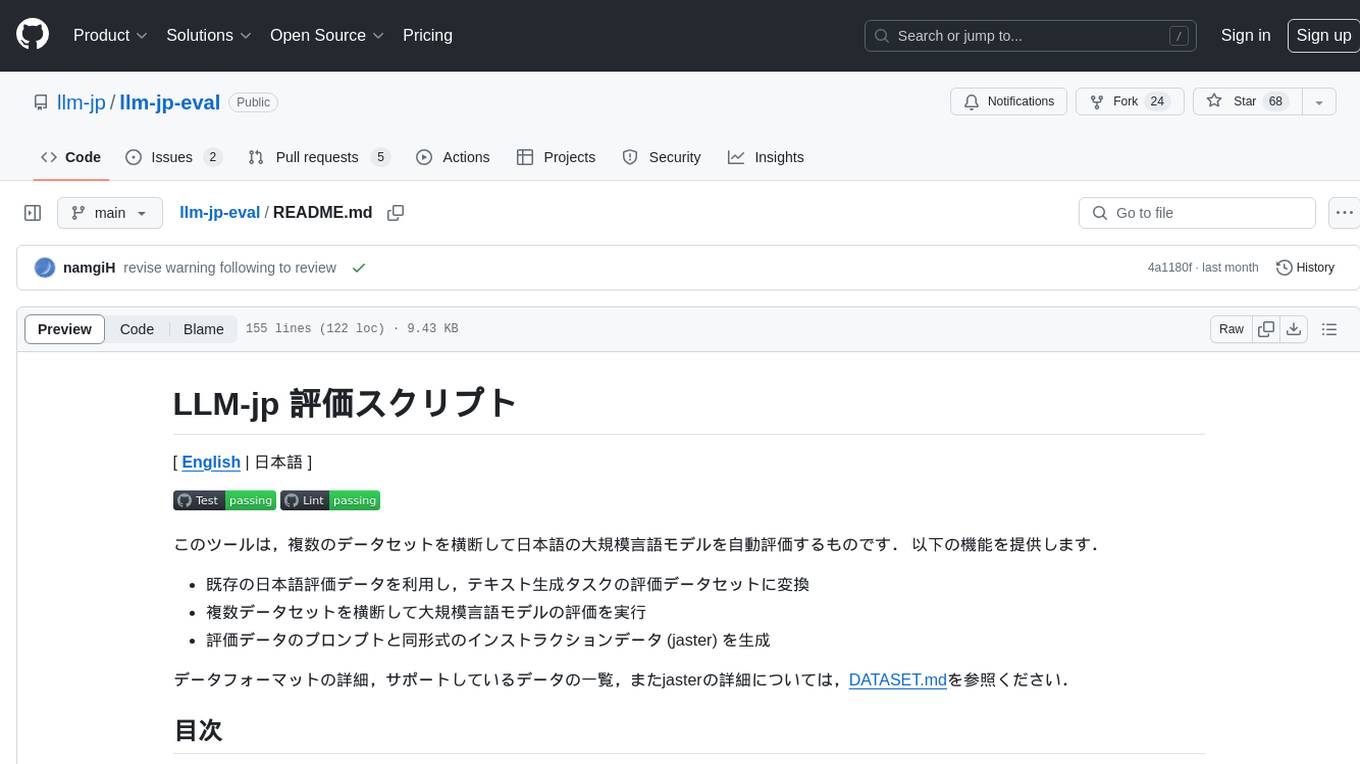
llm-jp-eval
LLM-jp-eval is a tool designed to automatically evaluate Japanese large language models across multiple datasets. It provides functionalities such as converting existing Japanese evaluation data to text generation task evaluation datasets, executing evaluations of large language models across multiple datasets, and generating instruction data (jaster) in the format of evaluation data prompts. Users can manage the evaluation settings through a config file and use Hydra to load them. The tool supports saving evaluation results and logs using wandb. Users can add new evaluation datasets by following specific steps and guidelines provided in the tool's documentation. It is important to note that using jaster for instruction tuning can lead to artificially high evaluation scores, so caution is advised when interpreting the results.
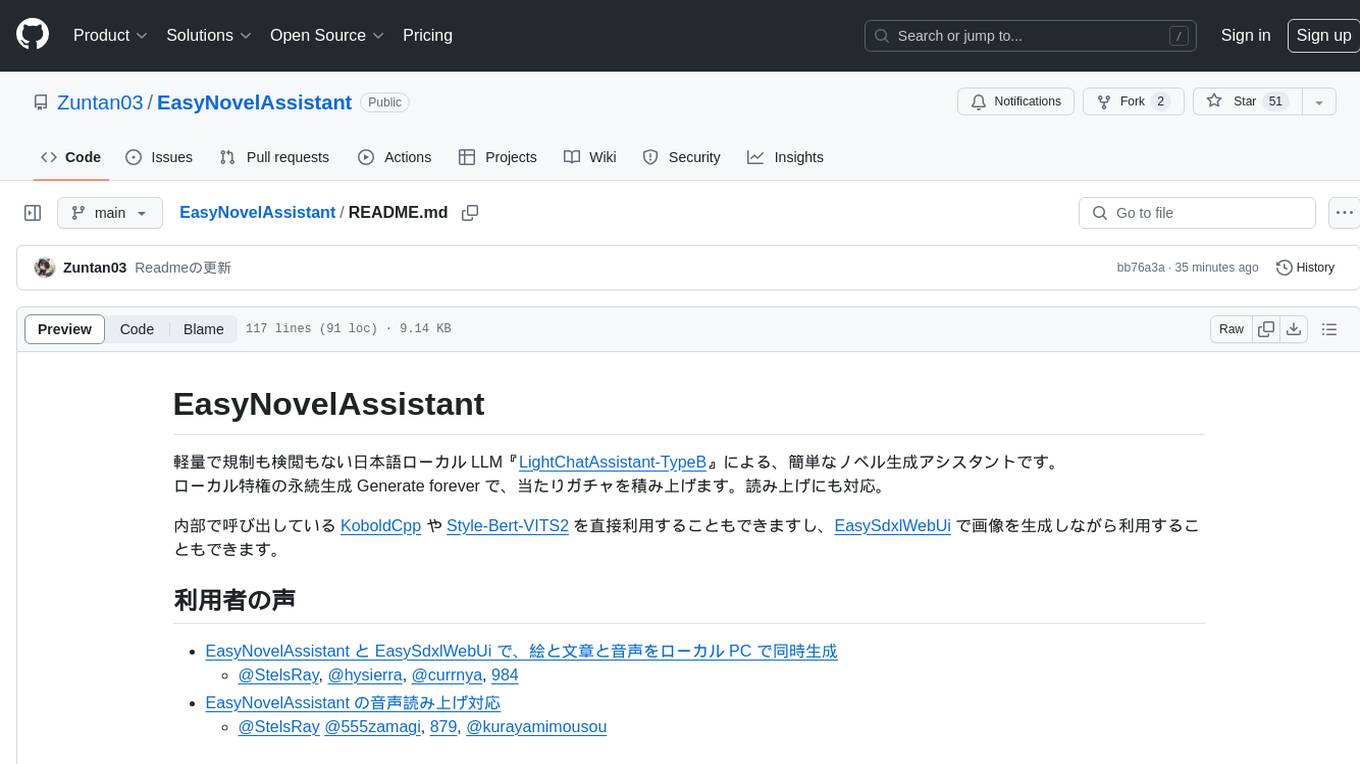
EasyNovelAssistant
EasyNovelAssistant is a simple novel generation assistant powered by a lightweight and uncensored Japanese local LLM 'LightChatAssistant-TypeB'. It allows for perpetual generation with 'Generate forever' feature, stacking up lucky gacha draws. It also supports text-to-speech. Users can directly utilize KoboldCpp and Style-Bert-VITS2 internally or use EasySdxlWebUi to generate images while using the tool. The tool is designed for local novel generation with a focus on ease of use and flexibility.
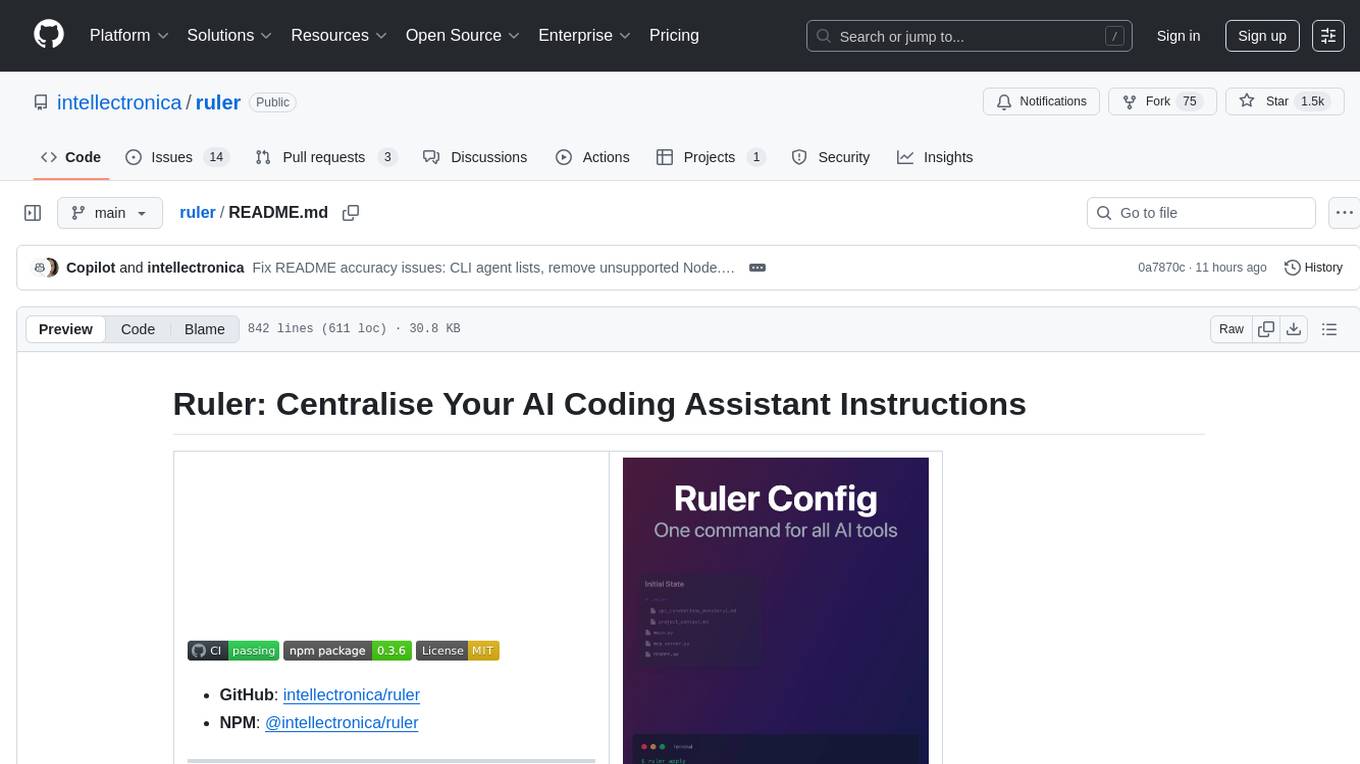
ruler
Ruler is a tool designed to centralize AI coding assistant instructions, providing a single source of truth for managing instructions across multiple AI coding tools. It helps in avoiding inconsistent guidance, duplicated effort, context drift, onboarding friction, and complex project structures by automatically distributing instructions to the right configuration files. With support for nested rule loading, Ruler can handle complex project structures with context-specific instructions for different components. It offers features like centralised rule management, nested rule loading, automatic distribution, targeted agent configuration, MCP server propagation, .gitignore automation, and a simple CLI for easy configuration management.
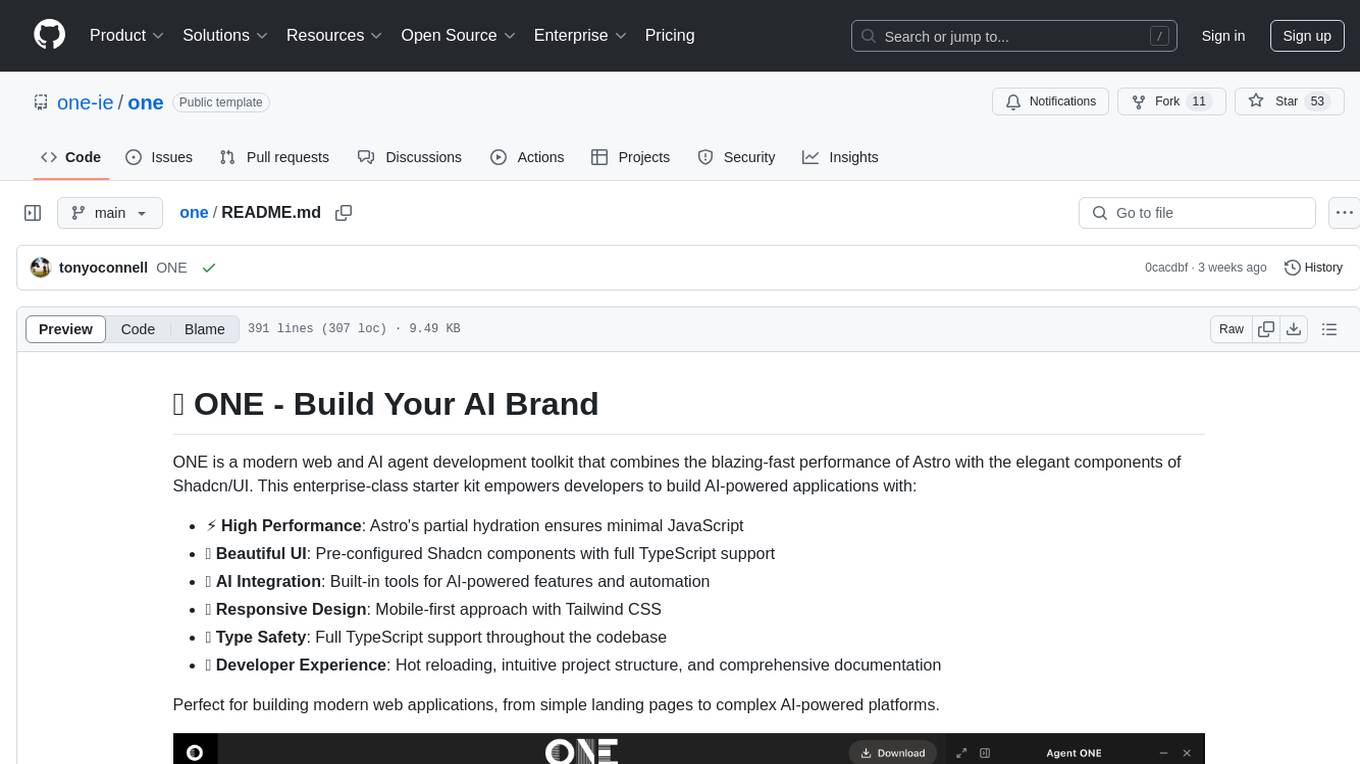
one
ONE is a modern web and AI agent development toolkit that empowers developers to build AI-powered applications with high performance, beautiful UI, AI integration, responsive design, type safety, and great developer experience. It is perfect for building modern web applications, from simple landing pages to complex AI-powered platforms.
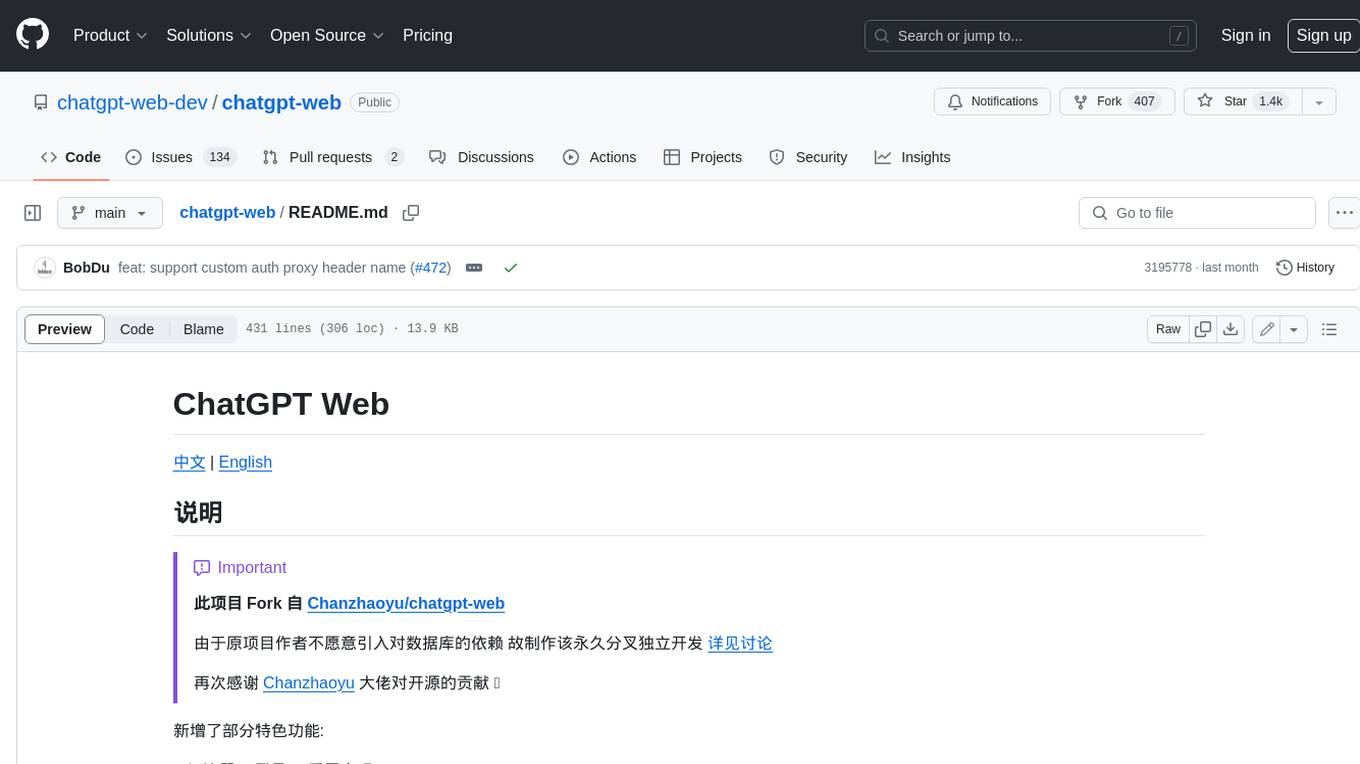
chatgpt-web
ChatGPT Web is a web application that provides access to the ChatGPT API. It offers two non-official methods to interact with ChatGPT: through the ChatGPTAPI (using the `gpt-3.5-turbo-0301` model) or through the ChatGPTUnofficialProxyAPI (using a web access token). The ChatGPTAPI method is more reliable but requires an OpenAI API key, while the ChatGPTUnofficialProxyAPI method is free but less reliable. The application includes features such as user registration and login, synchronization of conversation history, customization of API keys and sensitive words, and management of users and keys. It also provides a user interface for interacting with ChatGPT and supports multiple languages and themes.
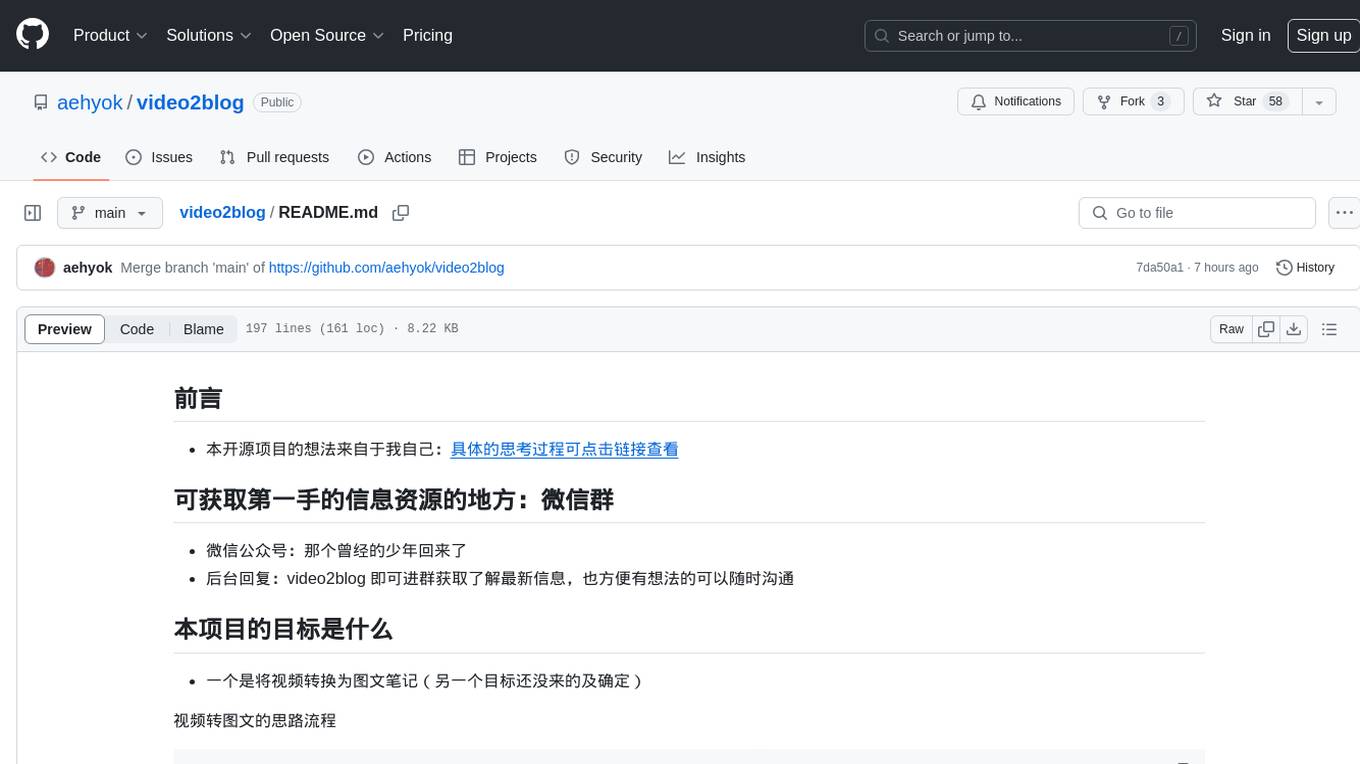
video2blog
video2blog is an open-source project aimed at converting videos into textual notes. The tool follows a process of extracting video information using yt-dlp, downloading the video, downloading subtitles if available, translating subtitles if not in Chinese, generating Chinese subtitles using whisper if no subtitles exist, converting subtitles to articles using gemini, and manually inserting images from the video into the article. The tool provides a solution for creating blog content from video resources, enhancing accessibility and content creation efficiency.
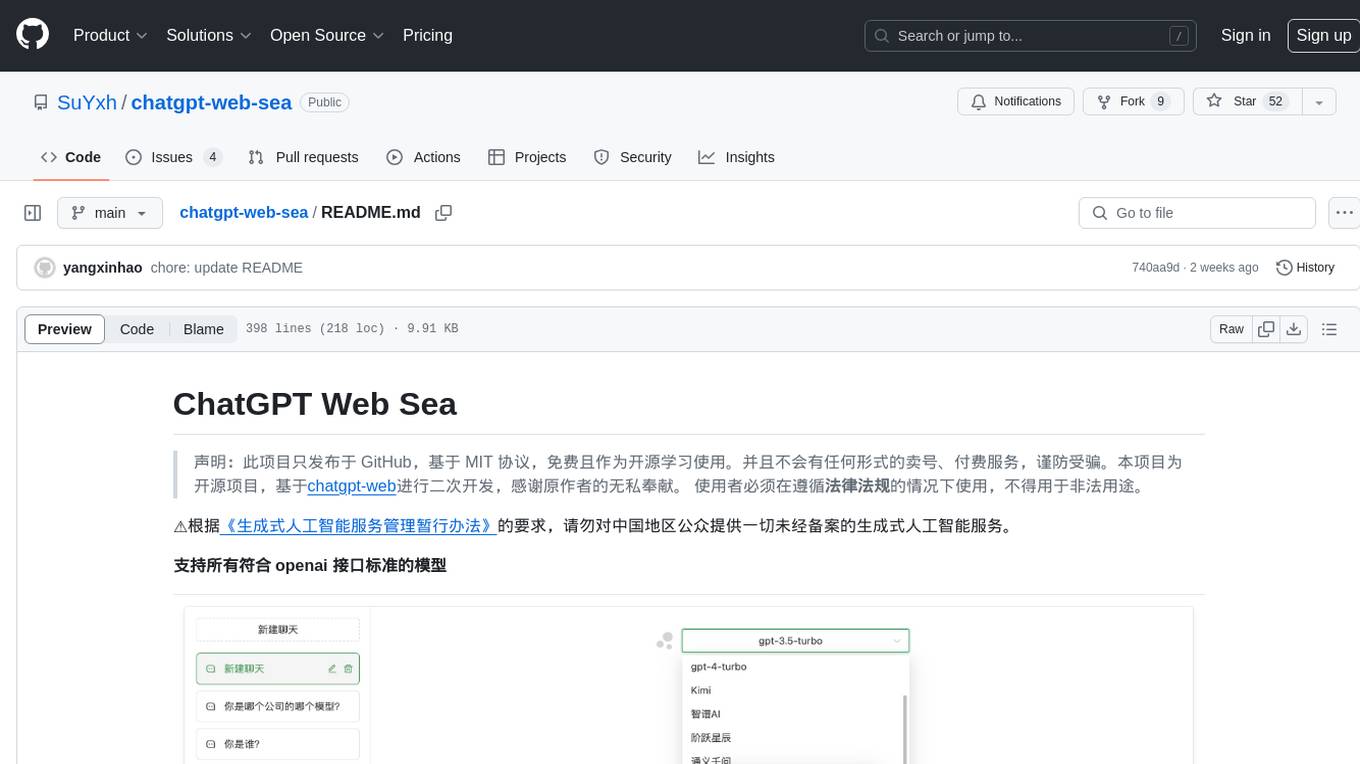
chatgpt-web-sea
ChatGPT Web Sea is an open-source project based on ChatGPT-web for secondary development. It supports all models that comply with the OpenAI interface standard, allows for model selection, configuration, and extension, and is compatible with OneAPI. The tool includes a Chinese ChatGPT tuning guide, supports file uploads, and provides model configuration options. Users can interact with the tool through a web interface, configure models, and perform tasks such as model selection, API key management, and chat interface setup. The project also offers Docker deployment options and instructions for manual packaging.
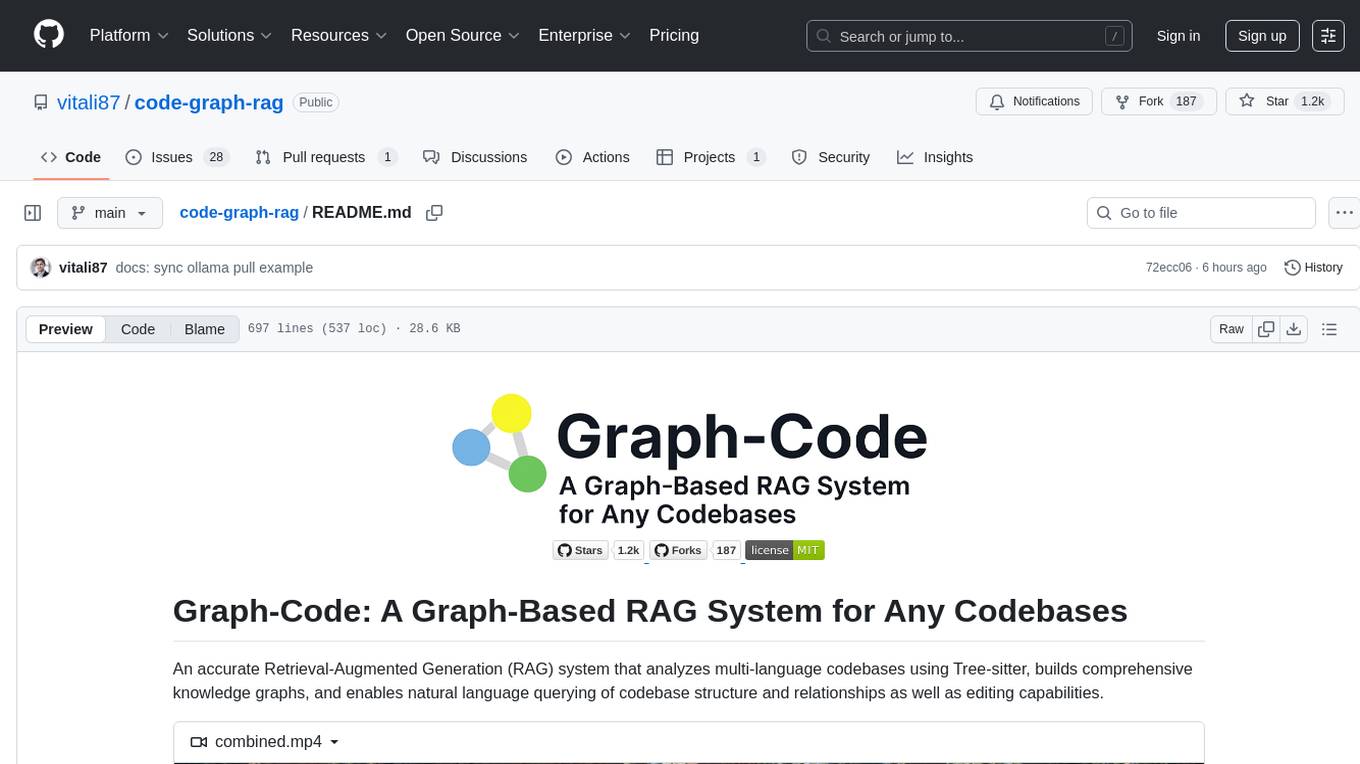
code-graph-rag
Graph-Code is an accurate Retrieval-Augmented Generation (RAG) system that analyzes multi-language codebases using Tree-sitter. It builds comprehensive knowledge graphs, enabling natural language querying of codebase structure and relationships, along with editing capabilities. The system supports various languages, uses Tree-sitter for parsing, Memgraph for storage, and AI models for natural language to Cypher translation. It offers features like code snippet retrieval, advanced file editing, shell command execution, interactive code optimization, reference-guided optimization, dependency analysis, and more. The architecture consists of a multi-language parser and an interactive CLI for querying the knowledge graph.
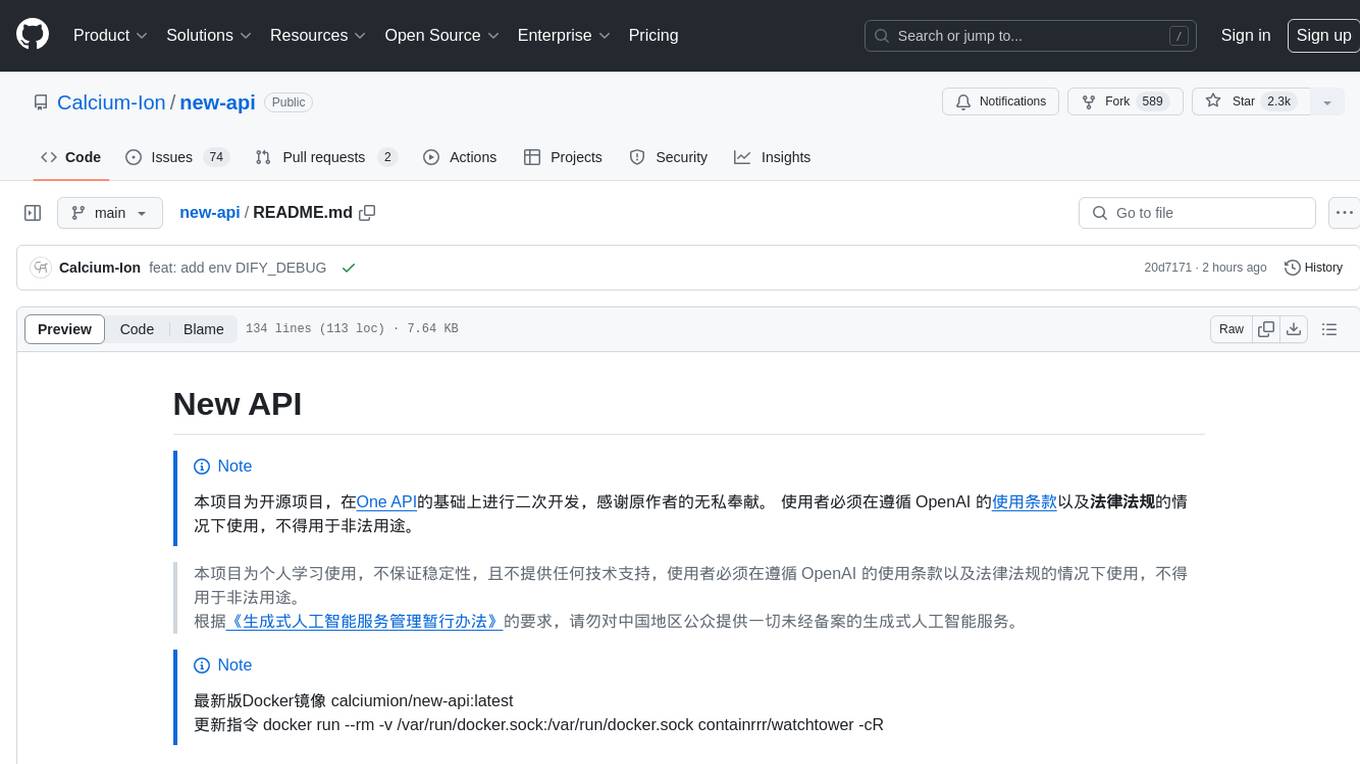
new-api
New API is an open-source project based on One API with additional features and improvements. It offers a new UI interface, supports Midjourney-Proxy(Plus) interface, online recharge functionality, model-based charging, channel weight randomization, data dashboard, token-controlled models, Telegram authorization login, Suno API support, Rerank model integration, and various third-party models. Users can customize models, retry channels, and configure caching settings. The deployment can be done using Docker with SQLite or MySQL databases. The project provides documentation for Midjourney and Suno interfaces, and it is suitable for AI enthusiasts and developers looking to enhance AI capabilities.
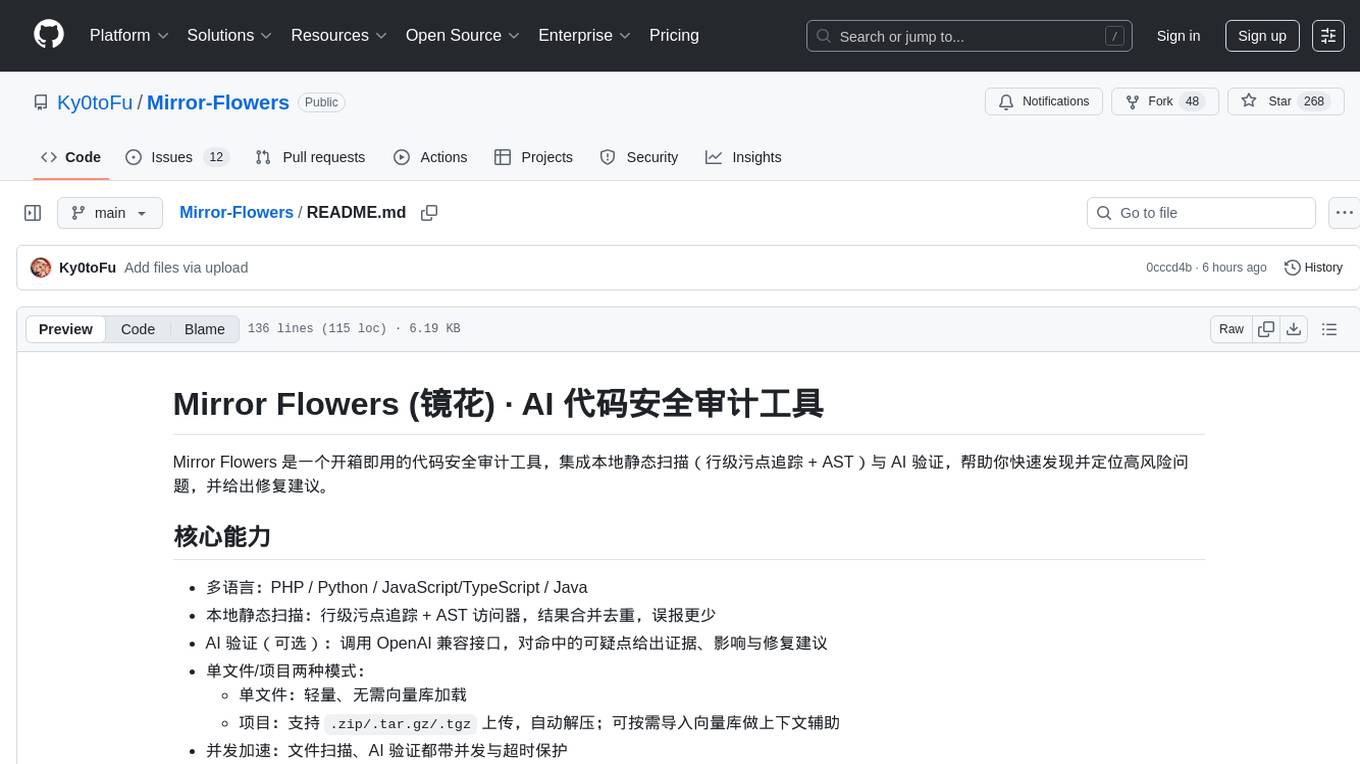
Mirror-Flowers
Mirror Flowers is an out-of-the-box code security auditing tool that integrates local static scanning (line-level taint tracking + AST) with AI verification to help quickly discover and locate high-risk issues, providing repair suggestions. It supports multiple languages such as PHP, Python, JavaScript/TypeScript, and Java. The tool offers both single-file and project modes, with features like concurrent acceleration, integrated UI for visual results, and compatibility with multiple OpenAI interface providers. Users can configure the tool through environment variables or API, and can utilize it through a web UI or HTTP API for tasks like single-file auditing or project auditing.
For similar tasks
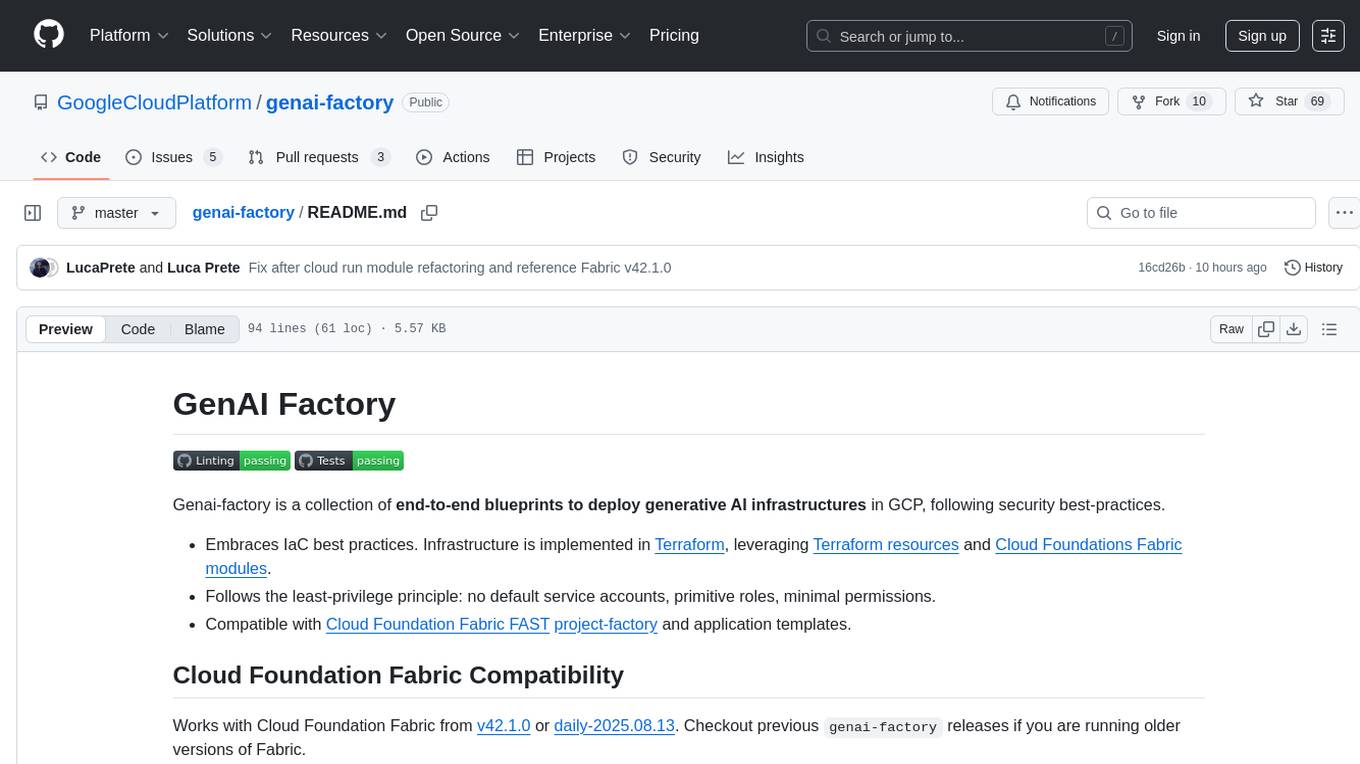
genai-factory
GenAI Factory is a collection of end-to-end blueprints to deploy generative AI infrastructures in Google Cloud Platform (GCP), following security best practices. It embraces Infrastructure as Code (IaC) best practices, implements infrastructure in Terraform, and follows the least-privilege principle. The tool is compatible with Cloud Foundation Fabric FAST project-factory and application templates, allowing users to deploy various AI applications and systems on GCP.
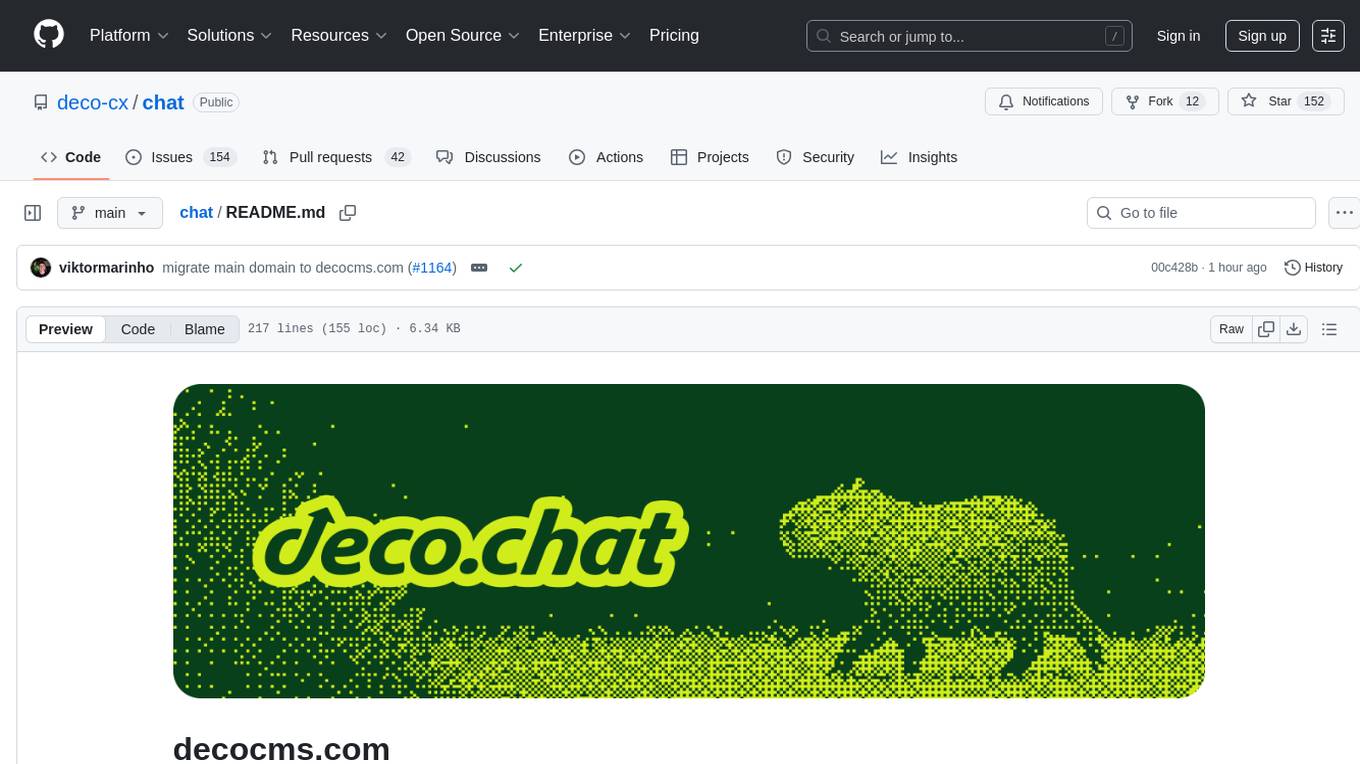
chat
deco.chat is an open-source foundation for building AI-native software, providing developers, engineers, and AI enthusiasts with robust tools to rapidly prototype, develop, and deploy AI-powered applications. It empowers Vibecoders to prototype ideas and Agentic engineers to deploy scalable, secure, and sustainable production systems. The core capabilities include an open-source runtime for composing tools and workflows, MCP Mesh for secure integration of models and APIs, a unified TypeScript stack for backend logic and custom frontends, global modular infrastructure built on Cloudflare, and a visual workspace for building agents and orchestrating everything in code.

app-platform
AppPlatform is an advanced large-scale model application engineering aimed at simplifying the development process of AI applications through integrated declarative programming and low-code configuration tools. This project provides a powerful and scalable environment for software engineers and product managers to support the full-cycle development of AI applications from concept to deployment. The backend module is based on the FIT framework, utilizing a plugin-based development approach, including application management and feature extension modules. The frontend module is developed using React framework, focusing on core modules such as application development, application marketplace, intelligent forms, and plugin management. Key features include low-code graphical interface, powerful operators and scheduling platform, and sharing and collaboration capabilities. The project also provides detailed instructions for setting up and running both backend and frontend environments for development and testing.
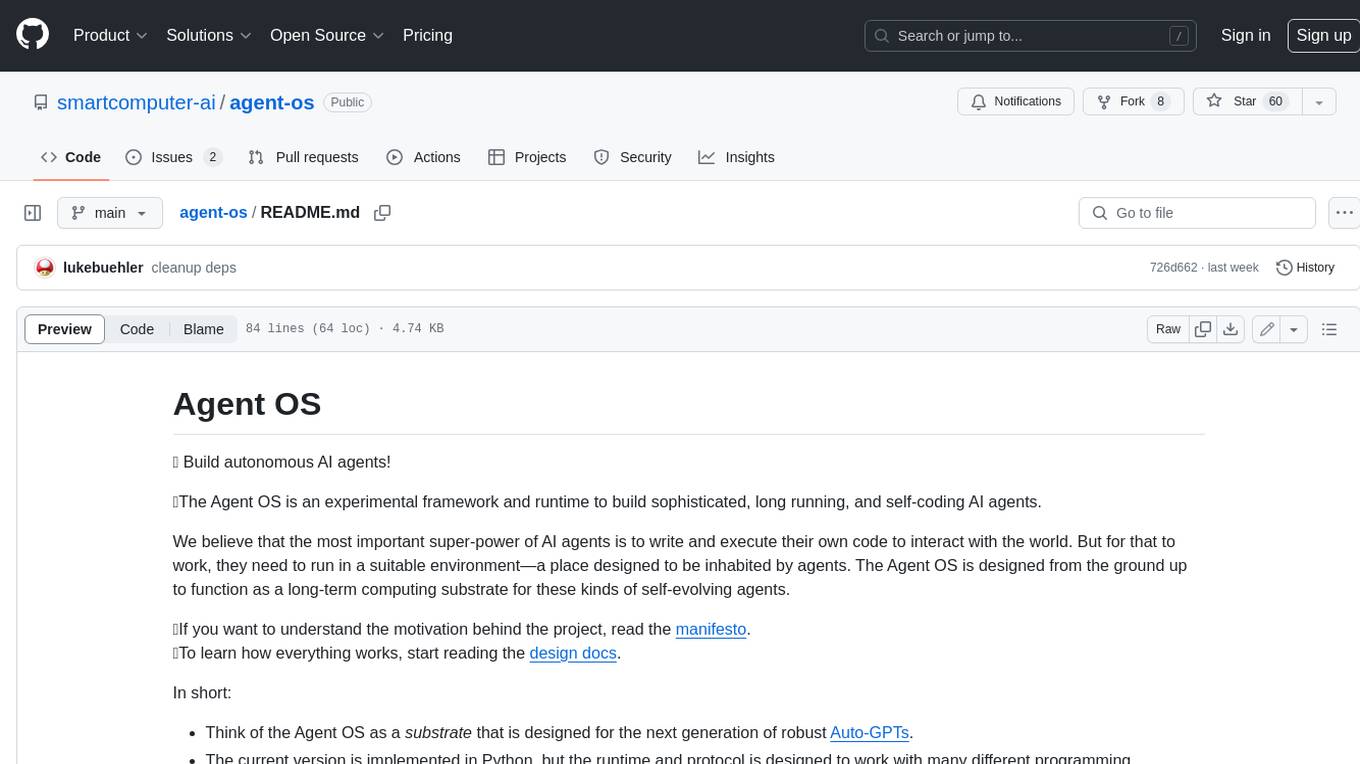
agent-os
The Agent OS is an experimental framework and runtime to build sophisticated, long running, and self-coding AI agents. We believe that the most important super-power of AI agents is to write and execute their own code to interact with the world. But for that to work, they need to run in a suitable environment—a place designed to be inhabited by agents. The Agent OS is designed from the ground up to function as a long-term computing substrate for these kinds of self-evolving agents.
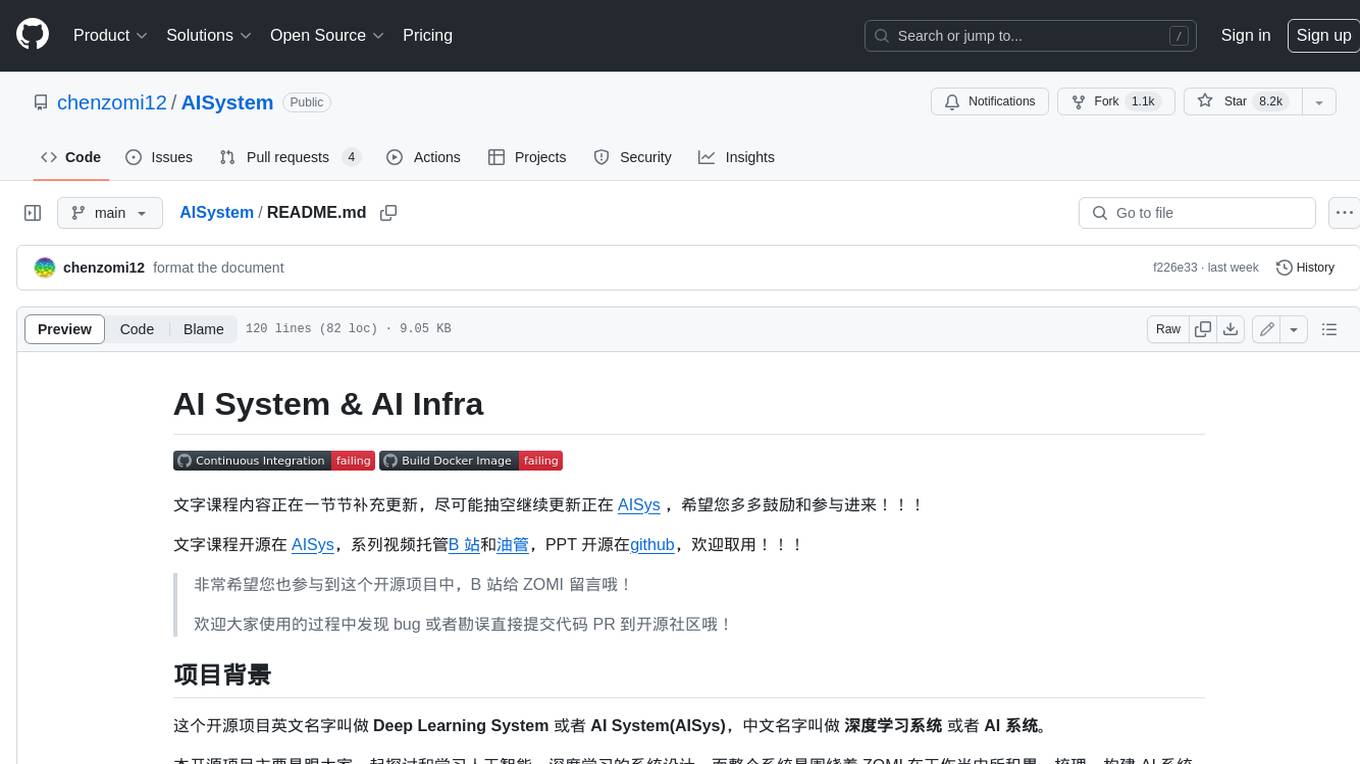
AISystem
This open-source project, also known as **Deep Learning System** or **AI System (AISys)**, aims to explore and learn about the system design of artificial intelligence and deep learning. The project is centered around the full-stack content of AI systems that ZOMI has accumulated,整理, and built during his work. The goal is to collaborate with all friends who are interested in AI open-source projects to jointly promote learning and discussion.
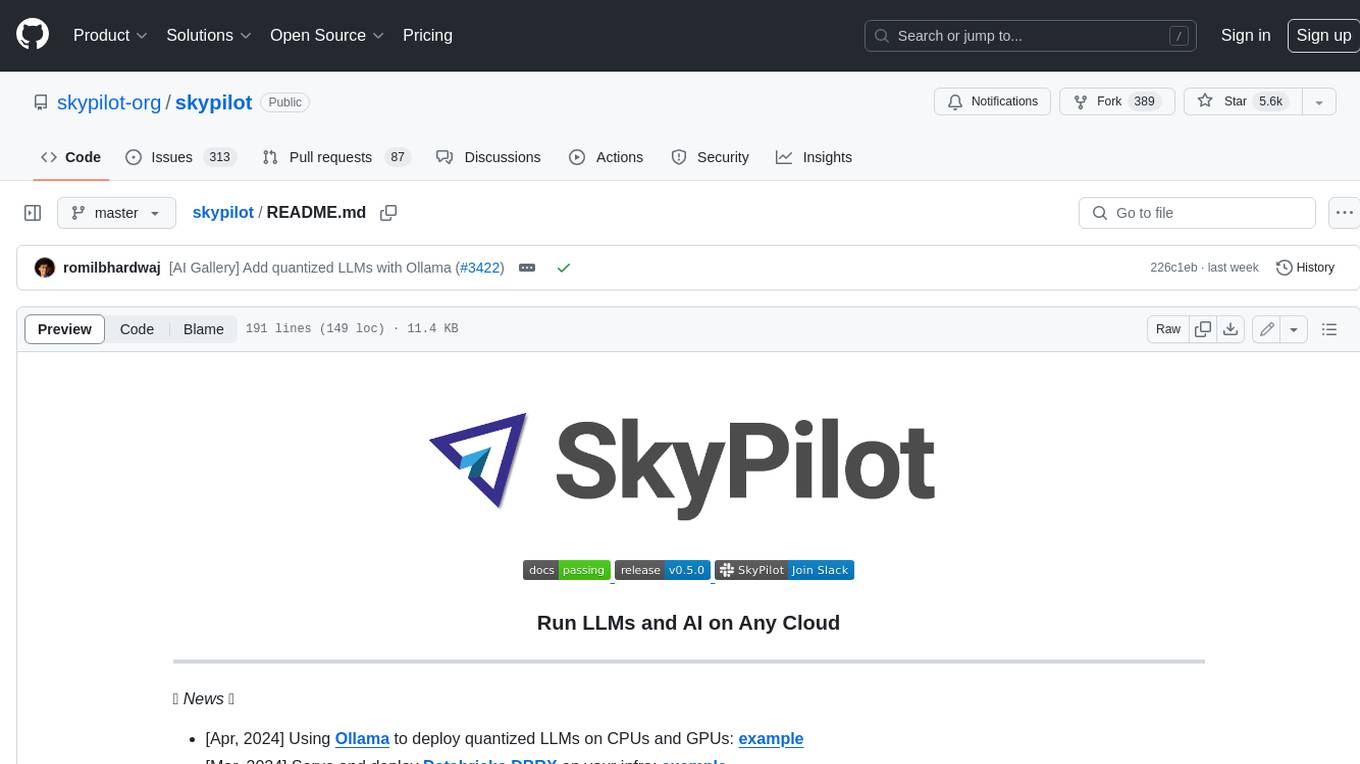
skypilot
SkyPilot is a framework for running LLMs, AI, and batch jobs on any cloud, offering maximum cost savings, highest GPU availability, and managed execution. SkyPilot abstracts away cloud infra burdens: - Launch jobs & clusters on any cloud - Easy scale-out: queue and run many jobs, automatically managed - Easy access to object stores (S3, GCS, R2) SkyPilot maximizes GPU availability for your jobs: * Provision in all zones/regions/clouds you have access to (the _Sky_), with automatic failover SkyPilot cuts your cloud costs: * Managed Spot: 3-6x cost savings using spot VMs, with auto-recovery from preemptions * Optimizer: 2x cost savings by auto-picking the cheapest VM/zone/region/cloud * Autostop: hands-free cleanup of idle clusters SkyPilot supports your existing GPU, TPU, and CPU workloads, with no code changes.
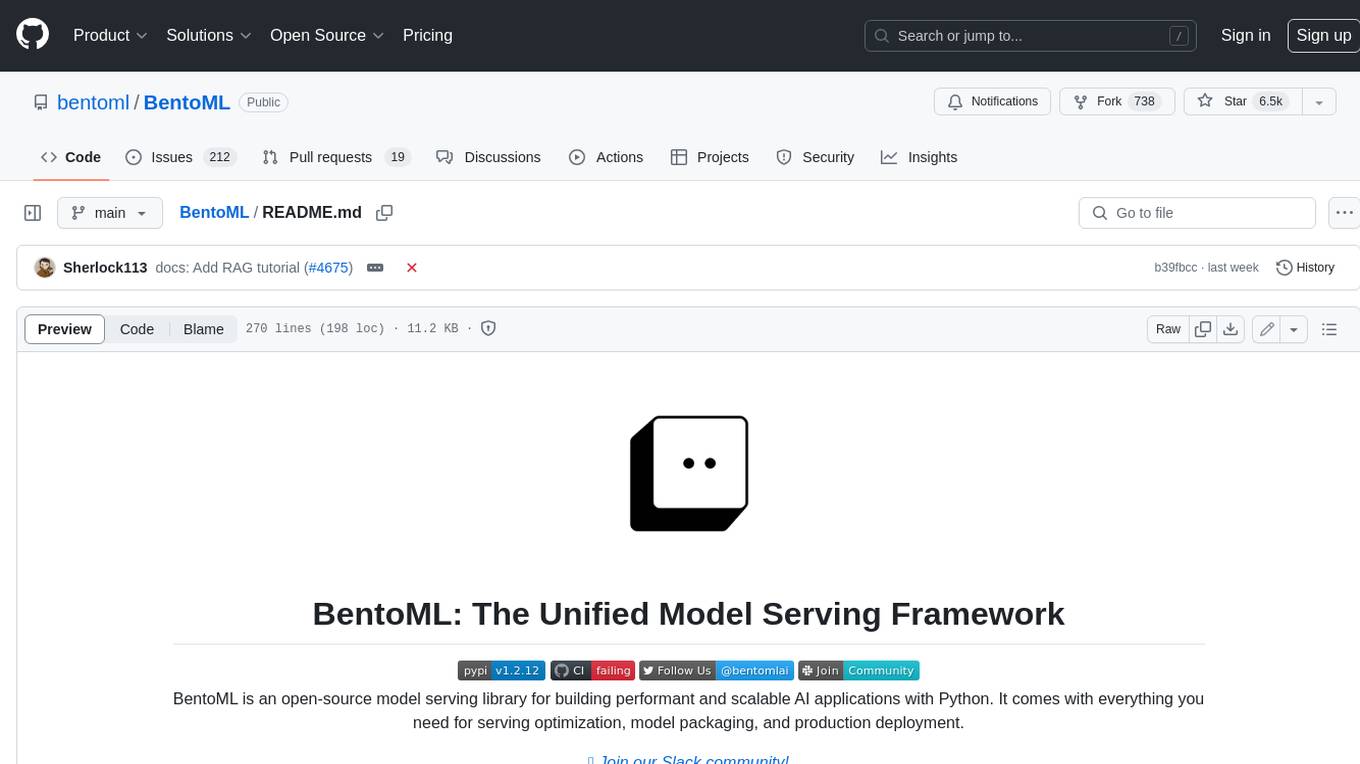
BentoML
BentoML is an open-source model serving library for building performant and scalable AI applications with Python. It comes with everything you need for serving optimization, model packaging, and production deployment.
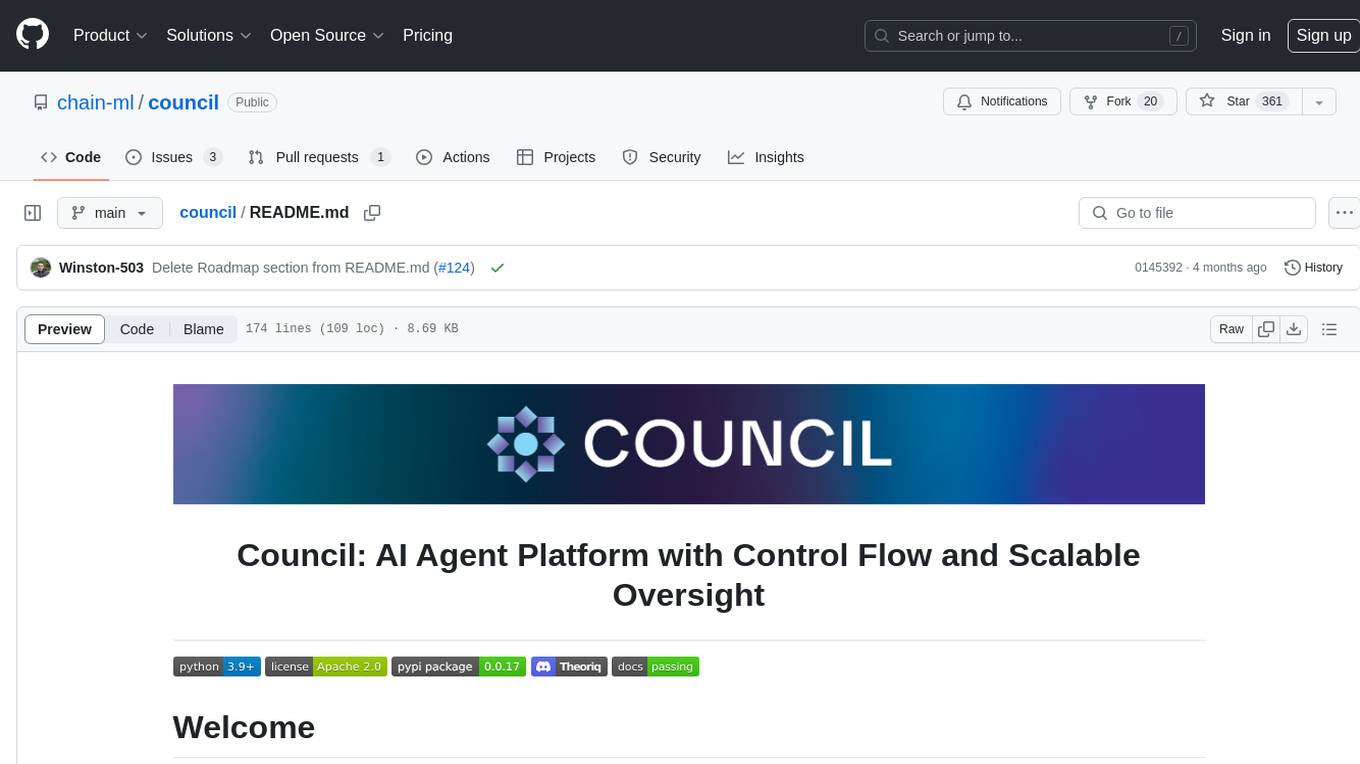
council
Council is an open-source platform designed for the rapid development and deployment of customized generative AI applications using teams of agents. It extends the LLM tool ecosystem by providing advanced control flow and scalable oversight for AI agents. Users can create sophisticated agents with predictable behavior by leveraging Council's powerful approach to control flow using Controllers, Filters, Evaluators, and Budgets. The framework allows for automated routing between agents, comparing, evaluating, and selecting the best results for a task. Council aims to facilitate packaging and deploying agents at scale on multiple platforms while enabling enterprise-grade monitoring and quality control.
For similar jobs
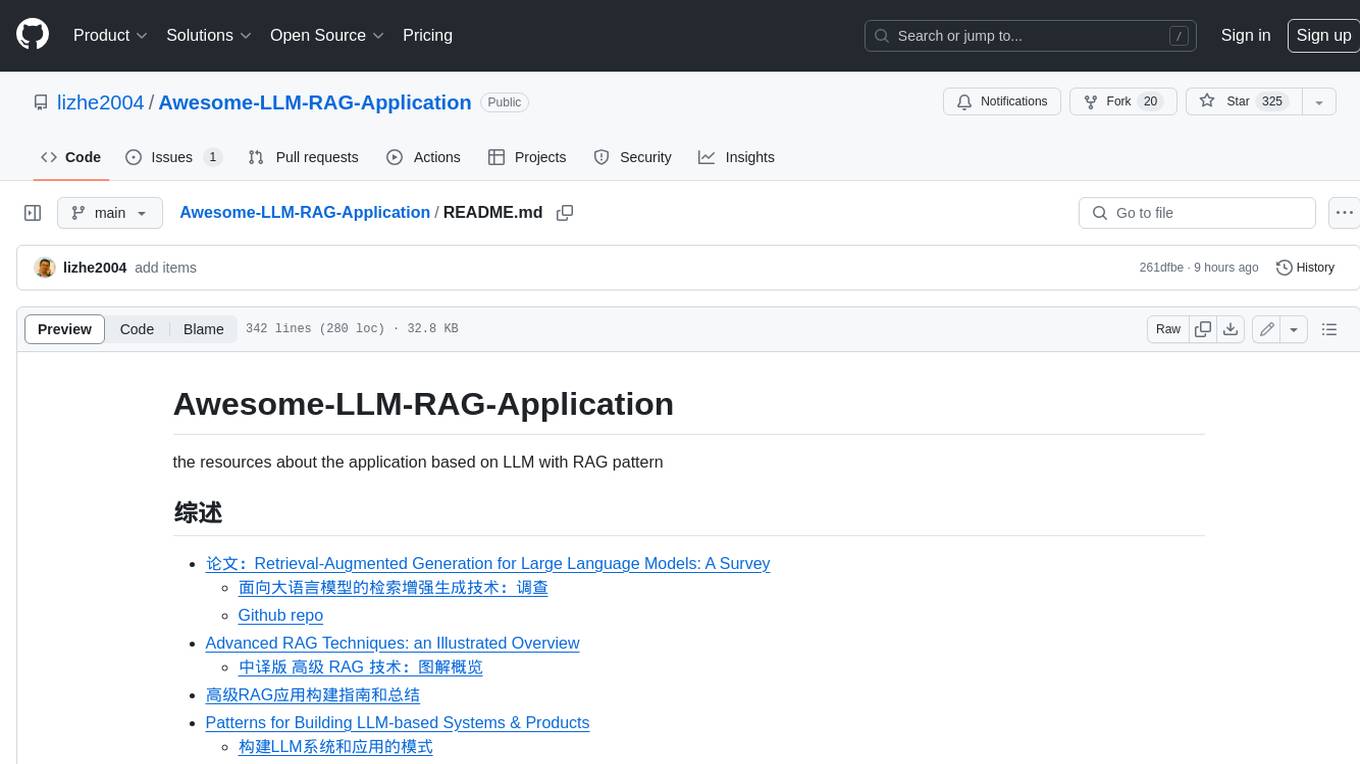
Awesome-LLM-RAG-Application
Awesome-LLM-RAG-Application is a repository that provides resources and information about applications based on Large Language Models (LLM) with Retrieval-Augmented Generation (RAG) pattern. It includes a survey paper, GitHub repo, and guides on advanced RAG techniques. The repository covers various aspects of RAG, including academic papers, evaluation benchmarks, downstream tasks, tools, and technologies. It also explores different frameworks, preprocessing tools, routing mechanisms, evaluation frameworks, embeddings, security guardrails, prompting tools, SQL enhancements, LLM deployment, observability tools, and more. The repository aims to offer comprehensive knowledge on RAG for readers interested in exploring and implementing LLM-based systems and products.
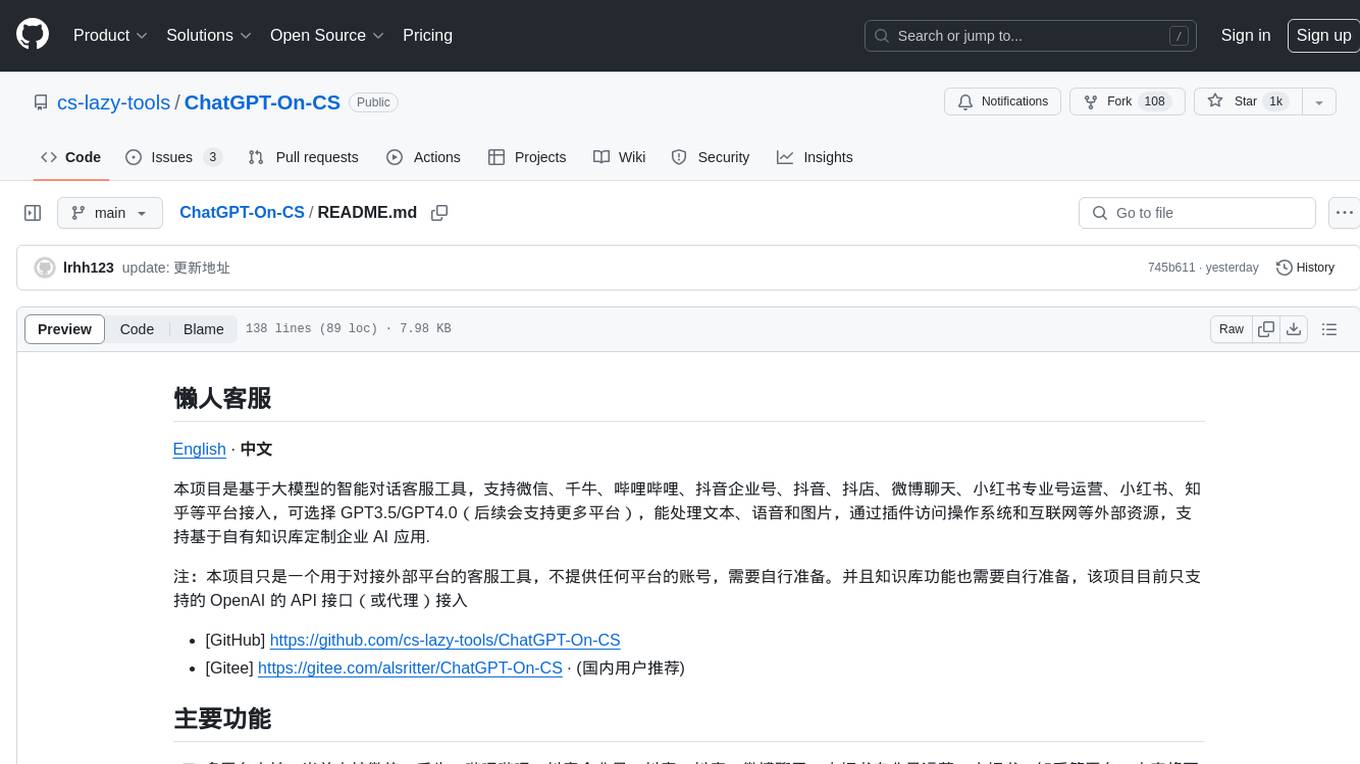
ChatGPT-On-CS
ChatGPT-On-CS is an intelligent chatbot tool based on large models, supporting various platforms like WeChat, Taobao, Bilibili, Douyin, Weibo, and more. It can handle text, voice, and image inputs, access external resources through plugins, and customize enterprise AI applications based on proprietary knowledge bases. Users can set custom replies, utilize ChatGPT interface for intelligent responses, send images and binary files, and create personalized chatbots using knowledge base files. The tool also features platform-specific plugin systems for accessing external resources and supports enterprise AI applications customization.
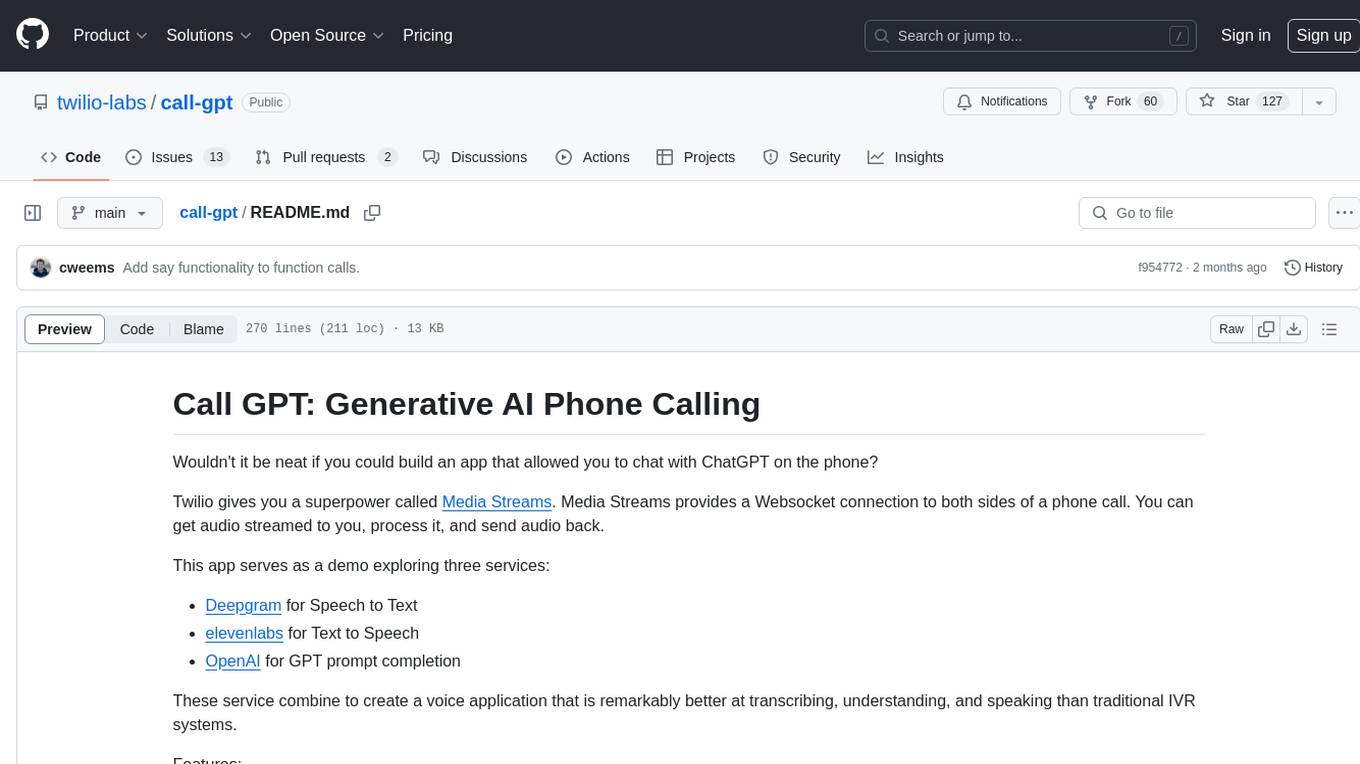
call-gpt
Call GPT is a voice application that utilizes Deepgram for Speech to Text, elevenlabs for Text to Speech, and OpenAI for GPT prompt completion. It allows users to chat with ChatGPT on the phone, providing better transcription, understanding, and speaking capabilities than traditional IVR systems. The app returns responses with low latency, allows user interruptions, maintains chat history, and enables GPT to call external tools. It coordinates data flow between Deepgram, OpenAI, ElevenLabs, and Twilio Media Streams, enhancing voice interactions.
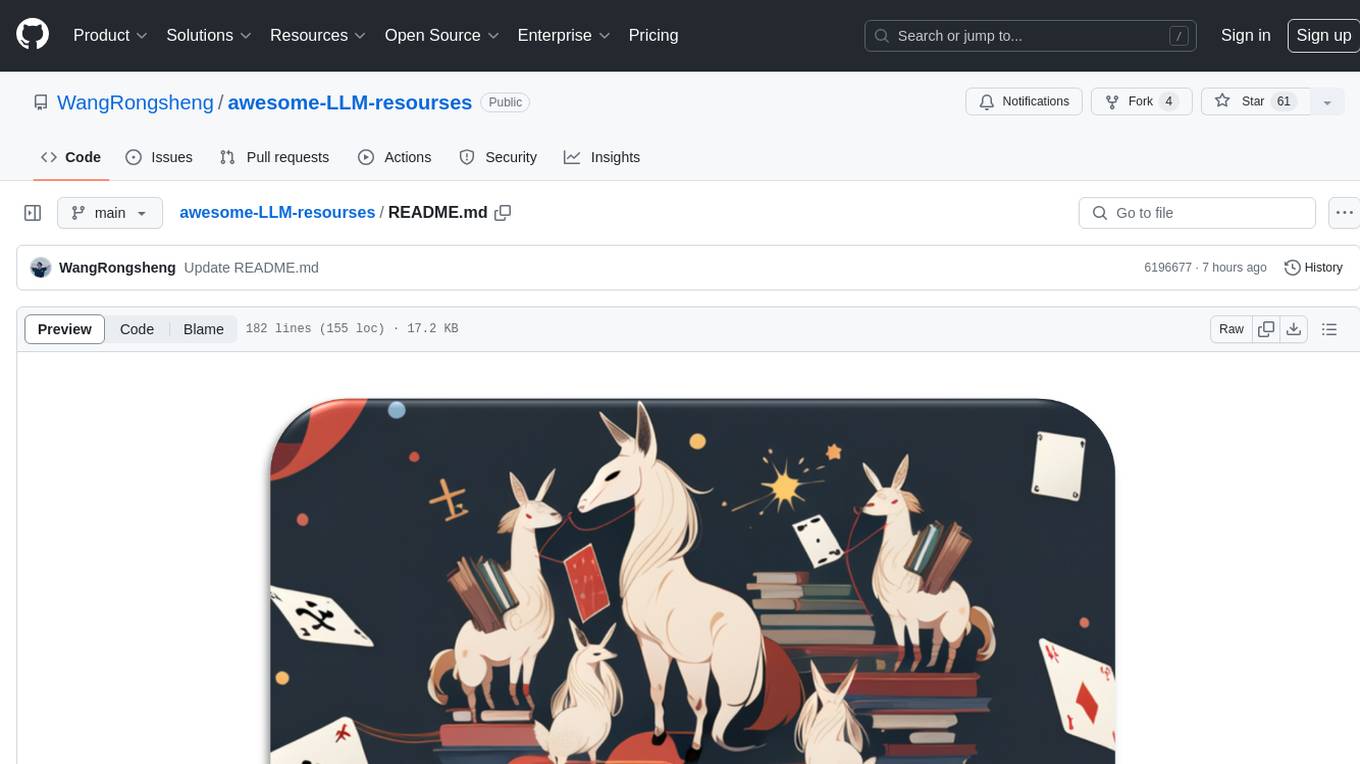
awesome-LLM-resourses
A comprehensive repository of resources for Chinese large language models (LLMs), including data processing tools, fine-tuning frameworks, inference libraries, evaluation platforms, RAG engines, agent frameworks, books, courses, tutorials, and tips. The repository covers a wide range of tools and resources for working with LLMs, from data labeling and processing to model fine-tuning, inference, evaluation, and application development. It also includes resources for learning about LLMs through books, courses, and tutorials, as well as insights and strategies from building with LLMs.
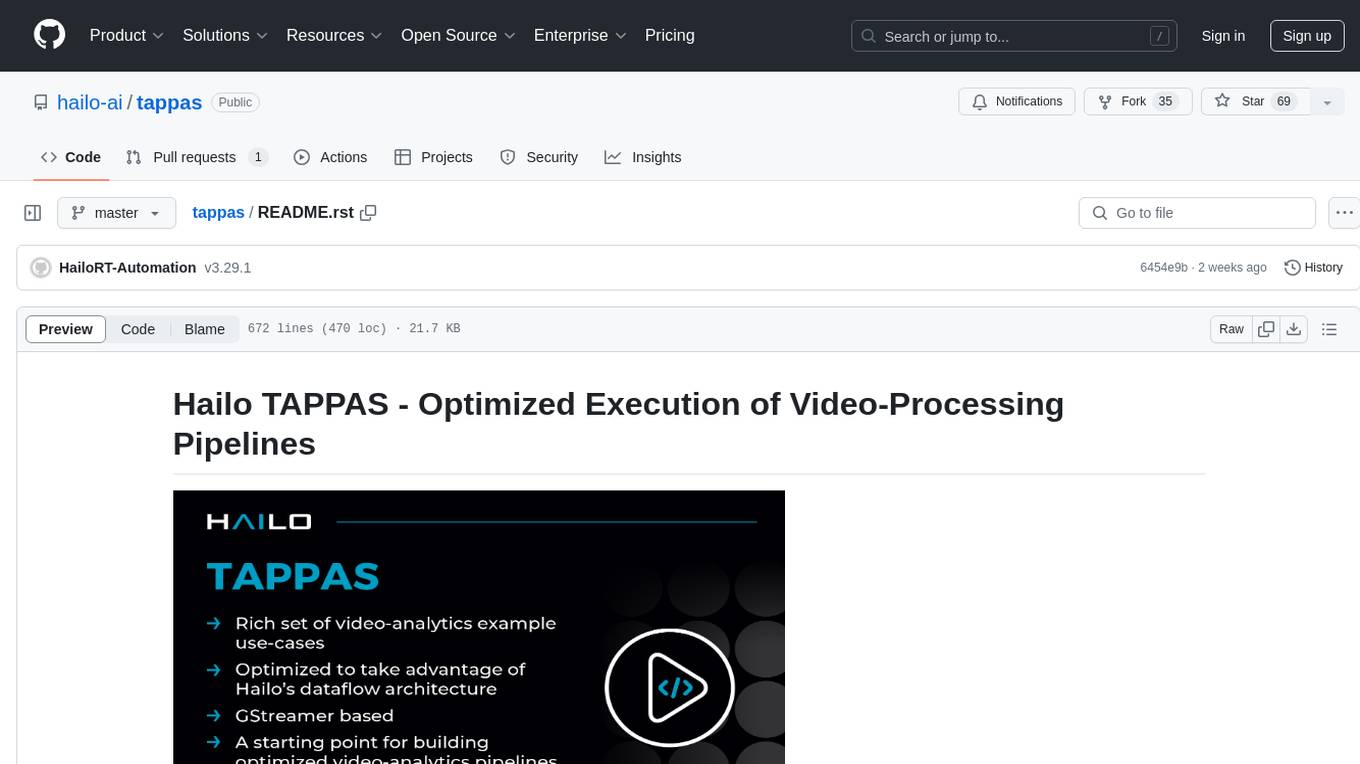
tappas
Hailo TAPPAS is a set of full application examples that implement pipeline elements and pre-trained AI tasks. It demonstrates Hailo's system integration scenarios on predefined systems, aiming to accelerate time to market, simplify integration with Hailo's runtime SW stack, and provide a starting point for customers to fine-tune their applications. The tool supports both Hailo-15 and Hailo-8, offering various example applications optimized for different common hosts. TAPPAS includes pipelines for single network, two network, and multi-stream processing, as well as high-resolution processing via tiling. It also provides example use case pipelines like License Plate Recognition and Multi-Person Multi-Camera Tracking. The tool is regularly updated with new features, bug fixes, and platform support.
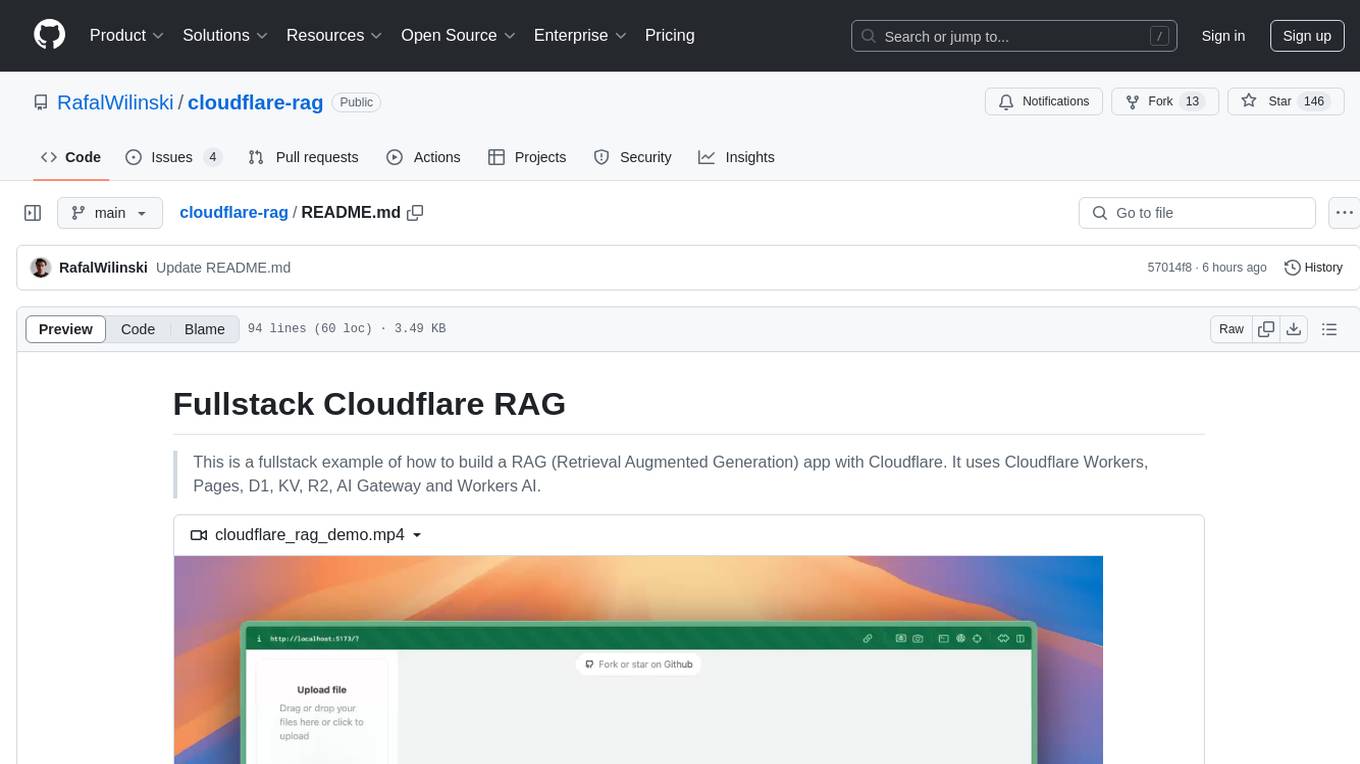
cloudflare-rag
This repository provides a fullstack example of building a Retrieval Augmented Generation (RAG) app with Cloudflare. It utilizes Cloudflare Workers, Pages, D1, KV, R2, AI Gateway, and Workers AI. The app features streaming interactions to the UI, hybrid RAG with Full-Text Search and Vector Search, switchable providers using AI Gateway, per-IP rate limiting with Cloudflare's KV, OCR within Cloudflare Worker, and Smart Placement for workload optimization. The development setup requires Node, pnpm, and wrangler CLI, along with setting up necessary primitives and API keys. Deployment involves setting up secrets and deploying the app to Cloudflare Pages. The project implements a Hybrid Search RAG approach combining Full Text Search against D1 and Hybrid Search with embeddings against Vectorize to enhance context for the LLM.
pixeltable
Pixeltable is a Python library designed for ML Engineers and Data Scientists to focus on exploration, modeling, and app development without the need to handle data plumbing. It provides a declarative interface for working with text, images, embeddings, and video, enabling users to store, transform, index, and iterate on data within a single table interface. Pixeltable is persistent, acting as a database unlike in-memory Python libraries such as Pandas. It offers features like data storage and versioning, combined data and model lineage, indexing, orchestration of multimodal workloads, incremental updates, and automatic production-ready code generation. The tool emphasizes transparency, reproducibility, cost-saving through incremental data changes, and seamless integration with existing Python code and libraries.
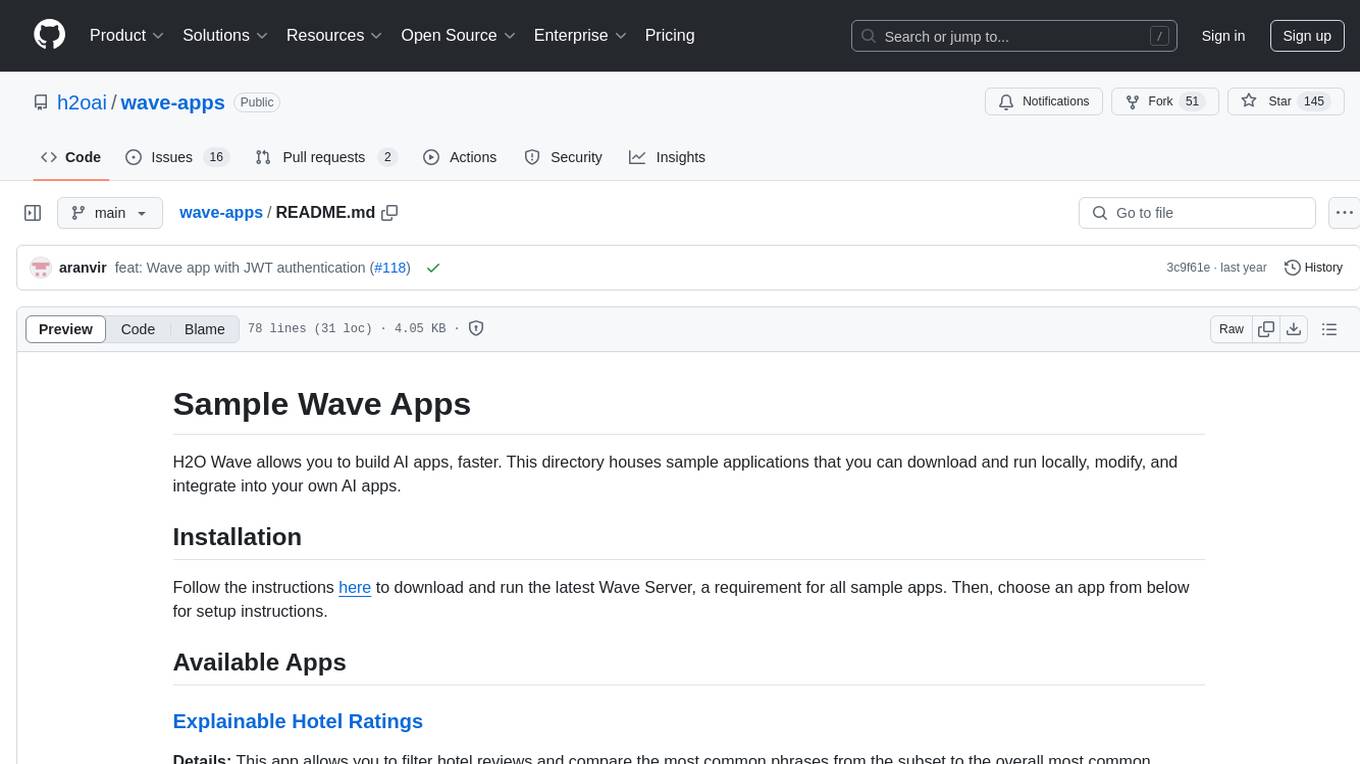
wave-apps
Wave Apps is a directory of sample applications built on H2O Wave, allowing users to build AI apps faster. The apps cover various use cases such as explainable hotel ratings, human-in-the-loop credit risk assessment, mitigating churn risk, online shopping recommendations, and sales forecasting EDA. Users can download, modify, and integrate these sample apps into their own projects to learn about app development and AI model deployment.
